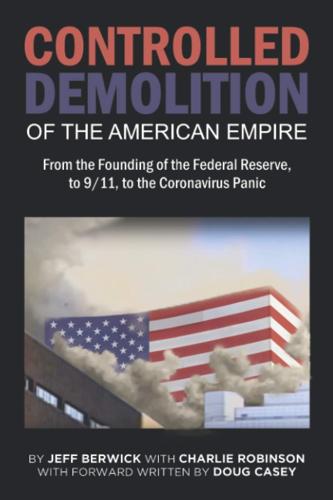
The Controlled Demolition of the American Empire
by
Jeff Berwick
and
Charlie Robinson
Published 14 Apr 2020
The American legal system must have consistency if it is going to work for the people, but when the world watched bankers steal billions of dollars from the American taxpayers and walk around as if they are gods, it creates a feeling of hopelessness in the public that there might just be two sets of laws: one for them, and another set for everyone else. Deliberate Urban Decay Is there urban decay in the United States? Have a tall glass of water in Flint, Michigan, walk down the street at night in Trenton, New Jersey, or go buy a house in Detroit for $1, then it will be obvious that the destruction of the inner cities began long ago. It was a pre-planned event designed to fill the cities with heroin, crack cocaine, and guns, while removing all disposable income, working- age fathers, and what little hope was left.
…
The Most Dangerous Company in the World An Idea So Good That It Has To Be Mandatory The Club of Rome The Trillion Dollar Lie Crumbling Infrastructure Regulating Government Stupidity PRE-WEAKENING OF THE BUILDING Playing a Rigged Game Globalization and the Amazon Economy Rise of the Eastern Empire Profiting From the Big House Deliberate Urban Decay Rules for Radicals IDENTIFYING THE SUPPORT COLUMNS Destroying Critical Thinking We Don’t Need No Education The Death of American Exceptionalism Rights, Not Privileges The Military-Information-Terror Complex The Fear & Death Administration (FDA) Control Alt Delete The Legalization of Lies RIGGING THE DETONATORS The American Printing Press in Action Before Coronavirus (BC) Terrorists in Nice Suits Economic Darwinism The Athlete’s Foot of Washington D.C.
…
The people decide what dreams and stories they do and do not buy – going right back to the Original Sins. Original Sins The American Empire has already been quietly dismantled well in advance so as not to raise the alarm bells that could wake sleeping dogs. Think a decline in morals and values, urban decay, government transparency, and most pervasively, the gradual removal of freedom. The most logical question is “why”? Why must the American Empire fall? The answer is relatively simple. The people in charge are going to bring this beast down on purpose to destroy the citizens that they have no respect for, to reset their fraudulent central banking system that has come to the end of its functional lifespan, and to hide their numerous and horrendous crimes against humanity… and then offer their solution.
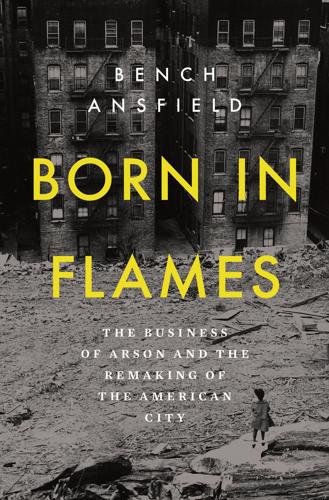
Born in Flames
by
Bench Ansfield
Published 15 Aug 2025
For landlords, the spoils of arson were manifest—Lanni was known to cruise through the South Bronx in a pink Cadillac.9 The investigation into Lanni’s syndicate brought one of the first high-profile indictments of an arson ring in the 1970s Bronx. District Attorney Mario Merola boasted that it was “one of the biggest arson conspiracies in the city’s history,” a line he would reprise again and again throughout the decade. The spectacular character of these syndicates made them fodder for media outlets looking for stories of urban decay and violence, and for prosecutors searching for high-profile convictions. Eye-catching though they were, the arson rings were far from representative of the arson industry as a whole.10 Most landlord arsons in the Bronx, especially in the first half of the 1970s, were not the product of organized crime but were, rather, carried out by small-time landlords who understood that they could squeeze far more insurance money from their buildings than they could rental income or equity.
…
Here a devastated South Bronx landscape furnishes the background for a bust of the newly named renewal czar, Ed Logue, who had been commissioned by New York City to head the borough’s redevelopment efforts following President Carter’s visit. Logue’s mission, according to the article’s author, was “to stem the cancerous spread of urban decay devastating the South Bronx, a community that is fast becoming a symbol of national shame.” To illustrate this undertaking, the Globe’s graphic designers set Logue’s eyes level with the dilapidated structures in the background, and the play between his eyes and the buildings is what animates the image.
…
The Occupied Look program, coordinated by the city’s fledgling Department of Housing Preservation and Development (HPD), installed vinyl decals over the borough’s broken windows. As announced on the front page of the Times, “Scores of crumbling, abandoned tenements in the Bronx—part of a swath of blight that has become a national symbol of urban decay—will soon sport vinyl decals over their gaping windows depicting a lived-in look of curtains, shades, shutters and flowerpots.” Citing budget shortfalls and cuts in federal support for cities, the HPD claimed that the trompe l’oeil decal program was the best it could do for the borough’s crumbling housing stock.58 The program, though, did not target the entire borough, only the buildings facing the Cross Bronx Expressway, from which thousands of commuters encountered the South Bronx as they bypassed it.

Age of the City: Why Our Future Will Be Won or Lost Together
by
Ian Goldin
and
Tom Lee-Devlin
Published 21 Jun 2023
Today, the decline of formerly prosperous cities in the ‘Rust Belt’ of the United States and other old industrial heartlands is fuelling a politics of resentment and rage. Inhabitants of these communities have found themselves struggling to make ends meet amid downward spirals of joblessness and urban decay. Meanwhile, elites in booming cities like New York, San Francisco, London and Paris have enjoyed soaring incomes. The resulting disillusionment has given rise to Trumpism and Brexit, and fuelled populist resentment against mainstream parties across Europe and the Americas. In the previous chapter, we explored how the rise of empires was associated with a centralization of power and wealth in imperial capitals.
…
Since the 1980s, however, economic activity has concentrated in a small number of major cities such as New York, San Francisco and Chicago, while many formerly thriving cities and towns have been left behind. Cities like Detroit, Cleveland and Milwaukee, once among the richest in the country,16 have entered seemingly intractable cycles of urban decay, with high rates of poverty, deteriorating public finances, decaying infrastructure and widespread crime. Income per capita in St Louis has fallen from 90 per cent of the level in New York in the late 1970s back down to 67 per cent.17 The urban-rural income gap has also surged to historic heights, as numerous rural centres have found themselves wrestling with joblessness and stagnating incomes.18 The decline in the tyranny of distance through the nineteenth and twentieth centuries helped to spread economic opportunity across the United States, and turned the economy into a network of many thriving cities and towns.
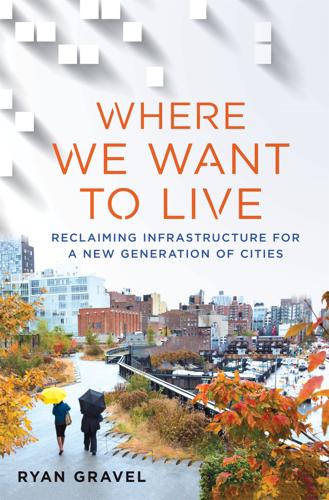
Where We Want to Live
by
Ryan Gravel
Published 2 Feb 2016
But when construction of a parallel interstate highway colluded with white flight to steal away its middle class and saddle Stewart Avenue with a burden of strip joints and now-seedy motels, the surrounding neighborhoods fell into a generation of decline. In light of that, my nostalgic view of the Atlanta Trailer City sign and other embellishments of that era always framed Stewart Avenue as a static symbol of urban decay. On my last visit to Chamblee Plaza, however, I realized it was one of many victims in the dynamic and endlessly destructive wake of sprawl. I was astonished to discover that the commercial strip of my youth had been mostly drained of life. All four of the anchor tenant spaces and much of the rest of it was empty.
…
Catastrophic job losses due to offshoring and mechanization, along with the physical abandonment of blocks of buildings and nearly entire neighborhoods by the suburbanizing middle class, led to failing schools, closing businesses, and struggling institutions. The city found itself in a cycle of decline that seemed unstoppable, generating a new national cultural expectation for its fate and sealing its late twentieth-century image as a symbol of urban decay. It was still the Motor City, but instead of the future, its identity became symbolic of what the future left behind. Fortunately, the world has changed, and so has Detroit, and the reality is that the city was never truly abandoned. It was redefined. And its new physical, social, economic, and cultural conditions have made it into much more than a spectacle of decay.
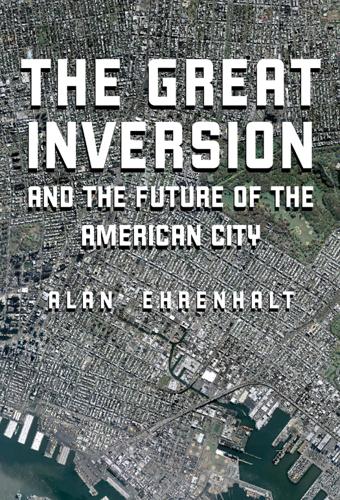
The Great Inversion and the Future of the American City
by
Alan Ehrenhalt
Published 23 Apr 2012
Environmental Protection Agency, February 2009. 7 “I woke up this morning”: Lyrics from the song “Gentrification Blues,” by Judith Levine and Laura Liben, 1982, quoted in Tom Slater, “A Literal Necessity to Be Replaced: A Rejoinder to the Gentrification Debate,” International Journal of Urban and Economic Research, March 2008, p. 216. 8 “The bear pit of gentrification debates”: Rowland Atkinson, “Gentrification, Segregation and the Vocabulary of Affluent Residential Choice,” Urban Studies, November 2008, p. 2634. 9 What is new in the past decade: See, for example, Lance Freeman, There Goes the ’Hood: Views of Gentrification from the Ground Up (Philadelphia: Temple University Press, 2006), and Jacob L. Vigdor, “Is Urban Decay Bad? Is Urban Revitalization Bad Too?” National Bureau of Economic Research, working paper 12955, March 2007, www.nber.org/papers/w12955. SELECT BIBLIOGRAPHY Abbott, Carl. Greater Portland: Urban Life and Landscape in the Pacific Northwest. Philadelphia: University of Pennsylvania Press, 2001.
…
Wall Street Journal, December 13, 2010. U.S. Department of Housing and Urban Development. “Housing the Olympics: Atlanta 1996.” U.S. Housing Market Conditions, Summary, Spring 1996. Vigdor, Jacob L. “Does Gentrification Harm the Poor?” Brookings-Wharton Papers on Urban Affairs, 2002, pp. 133–82. ——. “Is Urban Decay Bad? Is Urban Revitalization Bad Too?” National Bureau of Economic Research, working paper 12955, March 2007. Wolfgang, Laura. “The Sheffield Neighborhood: North Side’s Mini Melting Pot.” Midwest Magazine, Chicago Sunday Sun-Times, July 23, 1972. Wyly, Elvin, and Daniel Hammel. “Commentary: Urban Policy Frontiers.”

Rethinking Money: How New Currencies Turn Scarcity Into Prosperity
by
Bernard Lietaer
and
Jacqui Dunne
Published 4 Feb 2013
Rabot is the poorest community in the entire region. Most of the population lives in low-income apartment buildings in one of the most densely populated localities in Europe. Well over 20 languages are spoken, with Turkish the most prominent. Rabot suffers from high unemployment and the usual symptoms of urban decay, which have profound effects, both physical and metaphysical. In 2009, one of the authors was asked what could be done to improve the area. The starting point was a survey to find out what residents wanted for themselves. Many, particularly those living in high-rise apartment buildings, wanted to have access to a few square yards of land for gardening, growing vegetables, and flowers.
…
See Alchemy Transportation, 126–128, 201, 218–219 Trash, 141–142, 143, 145, 165–166 Treaty of Maastricht, 231n14 Triangle, 171 Trickle-down economics, 217 Trueque club, 182–184, 183 Trust, 19–20, 46; creating community, 171–172; in Friendly Favors, 132; WIR and, 100 Tutoring, 82 Twister, 156–157 Two-body problem, 30– 31 Uang kepeng, 189, 237n4, 237n5 Underclass, 216 Unemployment, 15–18; college and, 226–227n13; JAK bank and, 113; LETS and, 76; Nazi Party fueled by, 180; Patch Adams Free Clinic and, 164; in Rabot, 151; in Weimar Republic, 236n10; Wörgl and, 175–178 UN Happiness Resolution, 131 Union, 16, 119 United Nations Environmental Program (UNEP), 144 260 INDEX Unit of account, 58; money defined as, 28; professionals describing, 1–2; time as, 80– 81. See also Terra Trade Reference Currency University, 153–154, 193, 226–227n13 Unused resource, 59– 60, 80, 92, 120–121; in Curitiba, 142, 144; Terra and, 137 Upper class, 29, 50 Urban decay, 151 Urbanization, 103 Uruguay, 121, 124, 126–128 Value neutrality, 9, 46– 47 Velocity of circulation, 63– 64, 68– 69, 101–102, 178 Vermont Businesses for Social Responsibility (VBSR), 102–103 Vespasian, 197–198, 238n23 Veteran, 171–172 Victim, 78–79 Virtual reality, 57– 58 VISA, 192 Visiting Nurse Ser vice, 83 Volunteer, 34, 120 Voting, 147, 193 Voucher currency, 170 Wales Institute for Community Currencies, 160 War, 34 Wära, 175–176, 178–179 War on drugs, 134 Water rights, 187 Weimar Republic, 236n5, 236n10 Whitewashing, 198 WIR, 5, 74–75, 99–102, 235n12 WIR Bank, 100 Wispelberg School, 156–157 Wispos, 156–157 Women, 20, 205, 222–223 Word of mouth, 111–112 Wörgl, 175–178, 177, 180–181 Work, 219–220, 239n10 World Bank, 144, 188 World War I, 178–179 World War II, 99, 119, 153, 181 Writing, 24 Youth Advocate program, 83 Zeitgeist, 2 Zumbara, 82 Zutu, 207 ABOUT THE AUTHORS Photo credit: Rick Cummings.
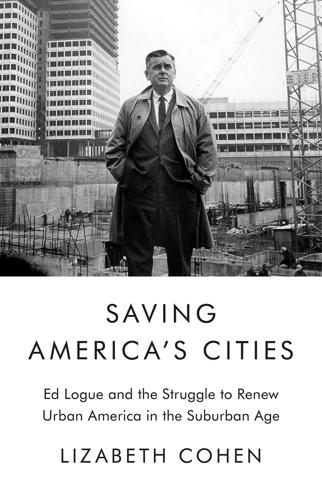
Saving America's Cities: Ed Logue and the Struggle to Renew Urban America in the Suburban Age
by
Lizabeth Cohen
Published 30 Sep 2019
But Ed Logue retained for life a special feeling for his first design partner, Paul Rudolph. Margaret Logue attributed their connection to “the chance occurrence of the two living in the same university community and sharing a focus on urban problems early in their careers and early in the recognition of urban decay.”136 Both Logue’s and Rudolph’s personal papers contained clippings about the other, suggesting that they kept track of their respective careers. At their last known public meeting, a conference at the New School in New York City titled “Rethinking Designs of the 60s,” Logue acknowledged Rudolph with warm affection.
…
And it is noteworthy that the esteemed architecture critic Ada Louise Huxtable, a self-described “unrepentant modernist,” praised Logue for “put[ting] up little houses in the rubble on Charlotte Street that symbolized hope and renewal when the South Bronx had become the poster child for terminal urban decay. You could say they were the right thing in the right place at the right time.”68 More than anything else, the shift from the publicly subsidized housing that Logue had been able to build with federal urban renewal funds in New Haven, Boston, and New York State to projects more dependent on the private marketplace affected the architecture of what got built.
…
In a 1983 speech to the National Housing Conference, he railed against the now reigning philosophy of “Let the market forces prevail.”97 Stephen Coyle, a successor of Logue’s at the helm of Boston’s BRA who would go on to run the AFL-CIO Housing Investment Trust, visited Logue in the South Bronx that same year and felt he was witnessing “the master builder surrounded by urban decay, with the federal government abandoning [him].”98 Filling part of the gap left by the retreat of the federal government and performing a novel role that connected private-sector funders to nonprofit recipients was a new player in the world of urban redevelopment: the “third sector,” dominated by foundations.
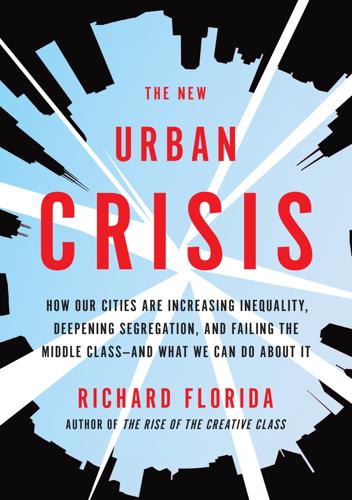
The New Urban Crisis: How Our Cities Are Increasing Inequality, Deepening Segregation, and Failing the Middle Class?and What We Can Do About It
by
Richard Florida
Published 9 May 2016
Why had the city exploded into racial turmoil and entered into such a steep decline? Why had the factory where my father worked closed down? My early experience of that original urban crisis left a deep imprint on me. When I went off to Rutgers College that fall, I found myself drawn to courses about cities and the urban issues of race, poverty, urban decay, and industrial decline. When I was a sophomore, my urban geography professor, Robert Lake, gave us an assignment to tour Lower Manhattan and chronicle what we saw. I was transfixed by the incredible urban change that was under way in SoHo, the East Village, and surrounding areas, captivated by the energy of the streets and of the artists, musicians, designers, and writers who lived and worked there.
…
As I pored over the data, I could see that only a limited number of cities and metro areas, maybe a couple of dozen, were really making it in the knowledge economy; many more were failing to keep pace or falling further behind. Many Rustbelt cities are still grappling with the devastating combination of suburban flight, urban decay, and deindustrialization. Sunbelt cities continue to attract people to their more affordable, sprawling suburban developments, but few are building robust, sustainable economies that are powered by knowledge and innovation. Tens of millions of Americans remain locked in persistent poverty. And virtually all our cities suffer from growing economic divides.
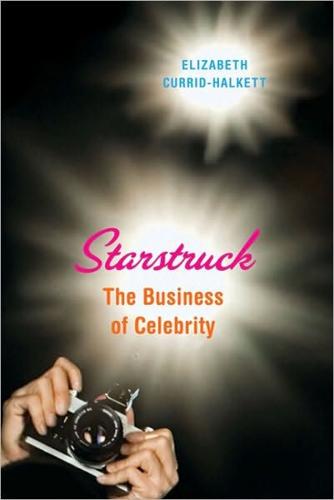
Starstruck: The Business of Celebrity
by
Currid
Published 9 Nov 2010
By the following summer, Kennedy was on the cover of übercool fashion magazine NYLON and featured in newspaper articles and profiles in the New York Times and Los Angeles Times and in various other mainstream media. She appeared in a music video rocking out to Good Charlotte’s “Keep Your Hands Off My Girl,” which became one of the most widely viewed Internet videos of all time.1 Kennedy signed on as the face of makeup company Urban Decay and she became friends with all the young starlets from Paris to Lindsay Lohan to Samantha Ronson. She became one of the most popular girls on MySpace (over 20,000 friends) and developed an active Twitter following (some 23,000 followers as I write this). Along the way, Hunter and Kennedy broke up.
…
Sontag, Susan Sotheby’s South Beach (Florida) Southern California, University of South Korea South Park (TV show) So You Think You Can Dance (TV show) Spears, Britney; bad behavior of; celebrity residual of; comments on blog postings on,; economic impact of; paparazzi and; volume of media mentions of Spears, Jamie Lynn Spice Girls; see also Beckham, Victoria Spielberg, Steven Spitzer, Eliot sports; celebrity residual in; networks in; relative celebrity in; see also baseball; football; soccer Sports Illustrated Sports Network SPPS Clementine Springsteen, Bruce Stallabrass, Julian Staller, Ilona (Cicciolina) Starbucks starlets Starr, Freddie Starr, Ringo Star Search (TV show) Star Trek TV shows and movies Stiller, Ben Streep, Meryl Stuckism art movement Studdard, Ruben Studio 54 (New York) Style Rookie subcultures Submission (film) Sudan Summers, Harvard Sun (tabloid) Sun Country Classic Sundance Film Festival Sunday Times supermodels superstar effect Surowiecki, James Sutton, Willie Szymanski, Stefan tabloids; American Idol winners in; Aniston in; bad behavior coverage in; British; covers; events covered by; Hilton in; Indian; paparazzi and; publicists and; sports stars in; superstar effect and; among top two hundred best selling magazines talent; in art world; celebrity residual versus; geography of stardom and; networks and; relative celebrity and; Star Currency and Talese, Gay Talley, André Leon Target stores Tate Modern (London) Tatler magazine Tavistock Group Taylor, Elizabeth Teixeira, Mark Teller, Juergen Tequila, Tila Texas Rangers Thakoon fashion house Thousand Years, A (Hirst) Timberlake, Justin Tipping Point, The (Gladwell) TLC TMZ Tokyo; World Cup in Tonight Show, The Topshop Torre, Joe Torvalds, Linus Total Request Live (TRL) trainers Transformers (film) Treasury bonds TriBeCa Film Festival Tron (film) Tron Guy Trump, Donald Trump, Melania Tucker, Ken Turner, Graeme Turner Prize Tussaud, Madame (Marie Grosholtz) Twentieth Century-Fox Twilight Saga films Twitter Underwood, Carrie Ungaro Union Square Cafe (New York) United Kingdom; art scene in; awards shows in; fantasy war games in; film premiers in; political elite in; press in; publicists in; reality TV in; sports celebrities in; see also London United Talent Agency Universal Pictures Urban Decay US Weekly; casual shots of stars in; circulation of; endorsement deals announced in; mentions of Winslet versus Aniston in U2 Vaccaro, Sonny Van Gogh, Theo Vanity Fair magazine; Oscar party hosted by Vaughn, Vince Verardi, Vincenzo VH1 Vicious, Sid Viper Room (Los Angeles) Virgin brand Vogue magazine; online Voltaire von Furstenberg, Diane Von Teese, Dita Walker, Kara Walk of Fame (Hollywood) Wallace, David Foster Wall Street Journal Wal-Mart Warhammer Warhol, Andy Warhol Economy, The (Currid-Halkett) Washington, D.C.
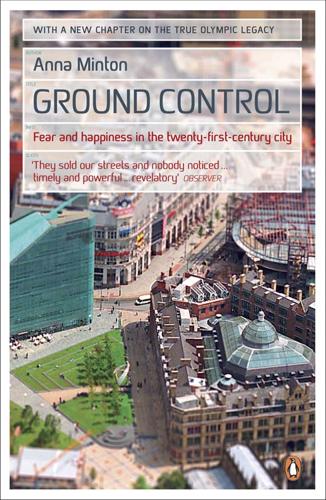
Ground Control: Fear and Happiness in the Twenty First Century City
by
Anna Minton
Published 24 Jun 2009
In Italy, France and Germany legislation had been passed to restrict large stores and favour smaller shopkeepers.12 In Britain things got so bad in the end that the policy of encouraging out-of-town superstores was actually reversed in the mid-1990s by the unusually far-sighted Conservative secretary of state, John Gummer. So it was out-of-town development, as much as decline in industry, which contributed to the perception of a rotting inner city. What really happened is far more complex than the appealing message that, following years of urban decay, the ‘urban renaissance’ transformed city life. The decline of the inner city and the ‘renaissance’, which is based on discredited ‘trickle-down’ economics, were not so straightforward, because trickle-down produces a very uneven pattern of growth, even when the boom and bust cycle is in an upswing.
…
Alongside shopping, the city’s ambition to reinvent itself as a centre for the global financial services industries initially went from strength to strength, with investment banks Kleinwort Benson, the Bank of New York and Citigroup all opening offices. Manchester, it seemed, had transformed itself, via ‘Madchester’, from industrial grime and decline to ‘the’ British city outside of London. Manchester seemed the perfect example of a city which symbolized the trajectory of progress proclaimed by the government, from urban decay to urban renaissance, and it was soon anointed New Labour’s favourite city. The love affair reached new heights when the party broke with ninety years of political tradition, abandoning failing Blackpool in favour of the upbeat image of Manchester as a more suitable venue for its annual conference in 2006.
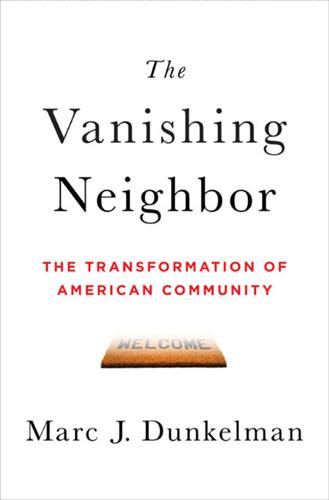
The Vanishing Neighbor: The Transformation of American Community
by
Marc J. Dunkelman
Published 3 Aug 2014
Finally, each community needed a dense concentration of residents—a critical mass that would keep streetscapes lively.22 Jacobs’s approach was soon followed by more academic studies. Several decades removed from the Dickensian world of early twentieth-century American metropolises—and in the aftermath of the urban decay wrought, in some circumstances, by the successive riots of the late 1960s—Claude Fischer, a sociologist at Berkeley, decided to take a second look at the Chicago School’s assumption that the bonds of community were undermined by the process of industrialization. What he found largely contradicted the conventional view.
…
(Eisenhower administration), 14, 51, 58, 65, 100, 190 elderly people, 196–211 independence of, 197, 203, 207, 208–9 elections, U.S., 15, 50, 56, 187, 190 Chinatown Bus effect and, 47 gerrymandering and, xvi, 182–87, 189 of 2012, 7, 37–38, 184–85 Elks Lodges, 44, 116 e-mail, xi, 8, 109–10, 125, 145 End of History, The (Fukuyama), 230–31 England, xii, 81, 82, 157, 158, 166–67, 179, 194 entrepreneurialism, 82, 164 ethnicity, 32, 79, 147, 148, 231, 237 ethnic tensions, 4, 39 Europe, 81, 226, 230, 232 evangelism, 42, 71 evolution, 90–91 expectations, 30, 60, 70–71, 82 Facebook, 37–38, 45, 48, 108, 114, 124–25, 140, 145, 148–49, 152, 190, 194, 219 faith, loss of, xv, xvii, xviii, 14, 181–82, 193, 195 family, 70, 119, 125, 129, 139, 194 affirmation and, 104–7 extended (traditional), 12, 15, 16, 26–27, 68, 97, 106 health care and, 201, 210 income inequality and, 21–22 nuclear, 16, 26, 32, 84, 145 in Saturn model, 95, 96 single-parent, 26, 30–31, 43, 105, 216 Farmer, Paul, 64 fathers, 12, 106, 131 of author, 132–33, 134, 240 fax machines, 16, 35, 74 fear, 71, 84, 119, 128, 157, 233, 235 of hitchhiking, 133, 134, 135 homosexuality and, 42 quality of life and, 50–52, 55–57, 60 Federal Express, 147–48 Ferguson, Niall, 229 Fiddler on the Roof (musical), 69–70 filibuster, xvi, 182, 185, 188, 191, 248n Filter Bubble, The (Pariser), 37 Fiorina, Morris, 139 First Wave society, 16, 20, 31–32, 233 Fischer, Claude, 87, 88, 105, 106, 128–29, 237–38 Fishkin, James, 192–93 Florida, Richard, 83, 175 food, 51, 58, 62, 79, 136–37, 202 brain and, 90–91 see also agriculture Ford, Gerald, 47 Fortune, 4–5, 14 Fowler, James, 96 Fox News, 184, 187–88 France, 80 Franklin, Rosalind, 161 Freakonomics (Levitt and Dubner), 7, 133–34 freedom, 25, 26, 43, 49, 52, 60, 67, 82, 102, 161, 207 French and Indian War, 157 Friedman, Thomas, xiv, 17–21, 24, 141–42, 151–52, 240 friends, 8, 12, 24, 25, 91, 95, 99–100, 101, 119, 120, 122, 124, 152, 194 affirmation from, 102–3, 104, 107, 110, 111 agreement of, 148–49 health care and, 201, 210 Fukuyama, Francis, 230–31 Galbraith, John Kenneth, 52 Gans, Herbert, 144–45 Gates, Bill, 10 gay marriage, 42, 50, 69 GDP (gross domestic product), 17, 53, 99, 180, 198, 227, 230 gemeinschaft, 86 General Social Survey, 105, 119–20, 260n–61n generational succession, 135 genetics, 160–62 genius, 159, 160, 162 Genovese, Kitty, 84–85 Georgetown University, 118 gerrymandering, xvi, 182–87, 189 ghettos, 128 Gingrich, Newt, 14, 15 Gini coefficient, 22, 23 Girls (TV show), 30 Gladwell, Malcolm, 6, 91–92 globalization, 17–18, 20, 50, 138, 141, 152, 221 global village, 16, 142–43 Google, 37, 194 government, U.S., xii–xviii, 52, 67, 200, 234 dysfunction of, 181–90 French government compared with, 80 health care and, 201–5 public frustration with, xiv–xvii, 181–83, 195 urban decay and, 127 Graduate, The (movie), 4, 28, 30, 248n Granovetter, Mark, 168–69, 266n Great Depression, 60, 68, 85, 202–6, 210, 226 Greatest Generation, 51, 70 Great Migration, 40–41, 43, 137 Great Recession, xv, 54, 55, 62, 106 Great Society, 210, 255n Gresens, Mr., 220–22, 225 grit, 5, 6, 216–25 Grove, Andy, 10 Guest, Avery, 118 Gutenberg, Johann, 162 “habits of the heart,” 81, 89, 115, 138, 258n Habits of the Heart (Bellah), 65–66, 141, 258n Hampton, Keith, 118–19 Harlem Children’s Zone (HCZ), 222, 224 health, health care, 101, 197–211 costs of, 198–200, 204–5, 206, 209–10 public, 197, 199, 204 quality of life and, 31, 51, 52, 57–60, 204 Hearst, William Randolph, 188 heart attack, 58, 200, 207 Heckman, James, 223 helicopter parent, 106 Henry, Peter Blair, 179–81 history, 51, 59, 67, 68, 230–34 affirmation and, 109, 110 of American community, 79–89 Dunbar’s number and, 94 Tofflers’ view of, 15–16 hitchhiking, 132–35 Hoffman, Dustin, 28 homogeneity, 46–47, 135, 147–48, 189, 191 homophobia, 42, 43, 51 homosexuality, 42–43, 87, 88 hospitals, 197, 199–204, 206–7 House of Representatives, U.S., xvi, 182, 184–85, 186 Hout, Mike, 237–38 Hughes, Charles Evans, 187 Hunter, James Davison, 69 hunter-gatherers, 16, 92, 142, 144–45 Hussein, Saddam, 67 Hutterites, 94 identity, 20, 42, 74, 130, 146 immigrants, 79, 82–83, 88, 232 income, xv, 21, 147, 180, 216, 227 discretionary, 55 inequality and, 21–24, 31 national, 21–22, 54 online communities and, 250n working women and, 27, 28 independence, 28–29, 30, 52, 57, 60, 106, 138, 151 of elderly, 197, 203, 207, 208–9 individualism, 65–66, 73, 74, 102 networked, 111 industrial paradigm, 14–15, 26, 82, 84–87, 170–71, 233 Industrial Revolution, xiii, 4, 16, 85, 86, 127, 138, 166, 201 inequality, economic, 21–24, 26, 31 information, 6–8, 18, 21, 26, 138, 260n brought together in a new way, 159–66, 209 Chinatown bus effect and, 35–38 information technology, 13, 16, 125, 141–43, 187, 209 affirmation and, 103–4, 108, 109–10 online communities and, 114–15 infrastructure, xiv, xv, xvi, 11, 25, 45, 194, 236 decay of, 229, 230 health, 200–201, 203–4, 206, 210 Inglehart, Ronald, 67–69, 73 inner directedness, 5–7 inner-ring relationships, see intimate relationships innovation, xiii, xvii, xviii, 158–75, 209 intellectual cross-fertilization, 158–68 interdependence, 17, 85–86 intermarriage: educational, 43–44 racial, 68 Internet, 10, 18, 36, 37, 121, 125, 146, 250n interracial marriage, 68 intimate relationships (inner-ring relationships), 92, 93, 96, 119–20, 137, 138–39, 145, 238 affirmation and, 103–7, 110, 112, 115 Chinatown Bus effect and, 42–46 health care and, 201, 204, 210 see also marriage iPhones, 160, 231 Iraq, 67 isolation: intellectual, 176 social, 73, 87, 113, 115, 118–19, 122, 127, 149, 207 Issacson, Walter, 164 Italy, 17, 163 It Gets Better Project, 43 Jackson, Kenneth, 40 Jacobs, Jane, 85–88, 127, 166–68, 170, 176 Jamaica, 179–81, 191 James, LeBron, 8–9 Japan, 226, 233 Jews, Orthodox, 98–99 jobs, 18–20, 23, 24, 27, 29, 30, 131, 139, 170–71, 235–36, 260n–61n affirmation and, 104–5, 107 assembly line, 53, 85 exporting of, 197–98 service, 18–19, 53, 132, 138, 236 Jobs, Steve, 10, 64, 160, 164–65 Johansson, Frans, 163, 168, 172 Johnson, Lyndon B., 127, 187, 210 Johnson, Steven, 159 Kahneman, Daniel, 13 Kelling, George, 150 Kelly, Mervin, 164 Kennedy, Robert, 206 Kenner, Edward, 158, 159 Kentucky, 147–48 Kerry, John, 47 Keynes, John Maynard, 53 Khrushchev, Nikita, 56 King, Martin Luther, Jr., 24, 46, 108–9, 128, 238 King, Stephen, 123 Kiwanis Club, 44, 45, 116 “Knowledge Is Power Program” (KIPP), 222, 223, 224 Koestler, Arthur, 158–60, 162, 166 Krebs cycle, 220–22 Ku Klux Klan, 111, 146 labor, labor unions, 14, 19, 20, 23, 53, 180, 181 leadership, xv, xvii, 23, 101, 108–9, 182, 186, 191 Leave It to Beaver (TV show), 34–35, 51 legislative districts, manipulation of (gerrymandering), xvi, 182–86, 189 Lehigh Valley, 170, 171 leisure, 53, 104–5, 139 Levin, David, 223 Levitt, Steven, 133–34 Lexus and the Olive Tree, The (Friedman), 141, 151–52 LGBT rights, 24, 42–43 libraries, 18, 36, 37 lifespan, longevity, 17, 31, 57–60, 62, 199, 204–5 Lincoln, Abraham, 228 Ling, Richard, 122–23 Lipset, Seymour Martin, 231 LISTSERVs, 114, 151 Little House on the Prairie (TV show), xii, 247n lobbyists, 183, 187, 229 Locke, Richard, 165, 172 Lonely Crowd, The (Riesman), 5–6, 7, 65, 141 Loose Connections (Wuthnow), 239 Lorain, Ohio, 79–80, 135 “lord of the manor” community, xii–xiii, 81 Lowery, Rev.
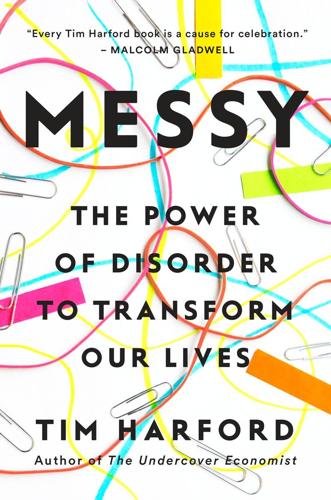
Messy: The Power of Disorder to Transform Our Lives
by
Tim Harford
Published 3 Oct 2016
But more pertinent, it was our eagerness to believe what his fraudulent study was telling us—to overestimate the ill effects of mess, to imagine that tidying up would have profoundly transformative effects on our moral selves, rather than just make our morning commute more pleasant—that led to its generating so much publicity. Not all messes have redeeming features: a train station that isn’t strewn with litter is more pleasant than one that is. It’s worth sweeping the platforms. But tidying up isn’t going to turn us into better people. • • • The story of the “broken windows” theory of urban decay is another example of how we instinctively overestimate the benefits of tidying up certain kinds of urban mess. The theory was proposed in an influential article in The Atlantic Monthly in 1982 by criminologist George Kelling and political scientist James Q. Wilson. Kelling and Wilson argued that small signs of disorder led to the breakdown of community norms and, eventually, to serious criminality.
…
The psychologist Philip Zimbardo is mentioned by Kelling and Wilson: He arranged to have an automobile without license plates parked with its hood up on a street in the Bronx and a comparable automobile on a street in Palo Alto, California . . . The car in Palo Alto sat untouched for more than a week. Then Zimbardo smashed part of it with a sledgehammer. Soon, passersby were joining in. Within a few hours, the car had been turned upside down and utterly destroyed.27 Interesting, but it is a stretch to build a theory of urban decay on what happens after one psychologist takes one sledgehammer to one car in one California city. The truth is that social science has not been able to muster much support for the broken windows theory of policing, nor for the idea that it deserves credit for breaking New York City’s crime wave in the 1990s.
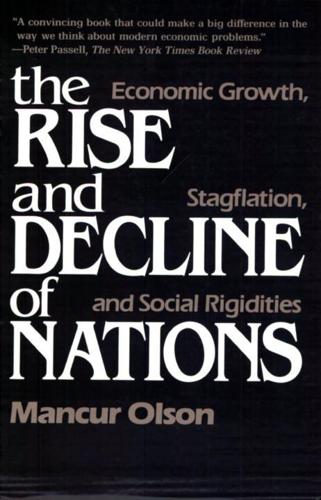
The Rise and Decline of Nations: Economic Growth, Stagflation, and Social Rigidities
by
Mancur Olson
Manchester, Liverpool, Birmingham, and Leeds completed the list in 1801. York, the third largest city in 1600, was the seventeenth in 1801; Newcastle, the fifth largest city in 1600, was the fourteenth in 1801, as indicated by table 5. 1.4 Even before 1601 there was concern about the "desolation of cytes and tounes." Charles Pythian-Adams's essay on "Urban Decay in Late Medieval England" argues from a mass of detailed, if scattered, figures and contemporary comments that the population and income of many English cities had begun to decline before the Black Death. Though Pythian-Adams finds that the decline of certain cities may be offset by the expansion of others, we are left wondering why so many towns declined while others grew.
…
Miriam Kohan (New York: Harper and Row; London: George Weidenfeld and Nicolson, 1973), pp. 439-40. 4. M. J. Daunton, "Towns and Economic Growth in Eighteenth-Century England," in Philip Abrams and F. A. Wrigley, eds., Towns in Societies (Cambridge and New York: Cambridge University Press, 1978). p. 247. 5. Charles Pythian-Adams. "Urban Decay in Late Medieval England," in Abrams and Wrigley, Towns in Societies, pp. 159-85. 6. Domenico Sella, Crisis and Continuity, The Economy of Spanish Lombardy in the Seventeenth Century (Cambridge: Harvard University Press, 1979), p. 136. On these matters see, for example, Jan De Vries, The Economy of Europe in an Age of Crises (Cambridge: At the University Press, 1976); Dudley Dillard, Economic Development of the North Atlantic Community (Englewood Cliffs, N.J.: Prentice Hall, 1967); Henri Pirenne, Economic and Social History of Medieval Europe (London: Routledge and Kegan Paul, 1936); and Douglass C.

Paintwork
by
Tim Maughan
Published 28 Jul 2011
The ground beneath the remaining towers swells up, at first looking like a small hill, until it becomes clear it is a humped spine, the towers taking on the appearance of ancient fins. The whole estate has transformed into a massive dinosaur, built from buildings and cars and lampposts and the infinite detail of urban decay. As 3Cube watches, grinning, it turns to face him with its horrifying jaws open, and roars. A deafening roar, so load and fierce that he can almost feel its breath on his face, as the rest of the dying urban landscape transforms itself into thick, vibrant jungle. An angry buzzing behind his ears, and Tera’s icon gives him the thumbs-down.
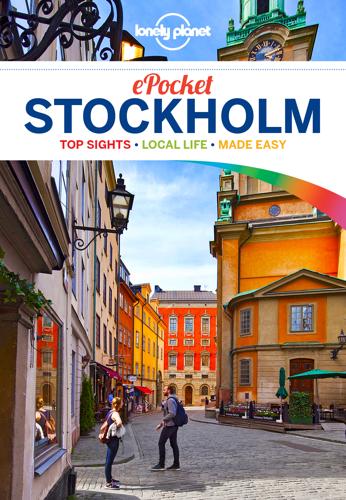
Pocket Stockholm Travel Guide
by
Lonely Planet
Off to the right is Whyred ( GOOGLE MAP ; %08-660 01 70; www.whyred.se; Mäster Samuelsgatan 3; h10am-7pm Mon-Fri, to 5pm Sat, noon-4pm Sun; dÖstermalmstorg), beloved for men's sweaters and women's shoes, among other things; next to that is the relatively new BLK DNM ( GOOGLE MAP ; %08-678 83 00; www.blkdnm.com; Mäster Samuelsgatan 1; dÖstermalmstorg), with its painfully hip jackets and other clothing by designer Johan Lindeberg. 4Cow Parfymeri A great place to pick up gifts to bring home, Cow Parfymeri ( GOOGLE MAP ; %08-611 15 04; www.cowparfymeri.se; Mäster Samuelsgatan 9; h11am-6pm Mon-Fri, to 4pm Sat; dÖstermalmstorg) is a cool cosmetics temple with a trendsetting range of perfumes, sticks and shades. Pick up rock-chic cosmetics from Urban Decay and Vincent Longo, or spray yourself silly with hard-to-find fragrances from Paris and New York. 5Espresso Stop By now you're probably ready for a break. The lovely Bianchi Cafe & Cycles ( GOOGLE MAP ; %08-611 21 00; www.bianchicafecycles.com; Norrlandsgatan 16; h11am-10pm Mon-Sat; dÖstermalmstorg) is an ideal spot for an espresso and a pastry. 6Kungsgatan You'll pass by all manner of retail outlets here, both local and global, including the fun outdoor market and food hall at Hötorget.

The Collapse: The Accidental Opening of the Berlin Wall
by
Mary Elise Sarotte
Published 6 Oct 2014
In a moment of hubris, Honecker had once speculated about proposing Leipzig to host the Olympic Games. This statement would have been risible had Honecker not been serious. Jahn, Radomski, and Schefke decided that Honecker’s unwise proposal provided an excellent opening to alert the world to the environmental and urban decay in Leipzig. Radomski and Schefke grabbed the video cameras smuggled to them by Jahn and headed south from East Berlin to Leipzig to film an undercover mini-documentary. Their video included not just images of crumbling buildings blackened by pollution but also interviews with brave, disbelieving Leipzigers willing to say on camera that it was unthinkable that the city could host an Olympics.
…
See Foreign journalists; “Information smugglers” Karl Marx Square (Leipzig), 69–70 Karlshorst, 10 Kastrup, Dieter, 161 Katyn massacre, 100 Kessler, Heinz, 13 KGB, 10, 157 Khrushchev, Nikita, 100 King, Martin Luther, Jr., 56 Kochemasov, Vyacheslav, 52, 100–101, 102, 110, 111 Kohl, Helmut, 8, 91, 128, 179 adding territory of GDR to FRG, plan of, 170 and announcement of travel law, reaction to, 122–124 Basic Law, Article 23, allowing new states to join FRG and, 170–171 and Berlin Wall opening, response to, 158, 163–164 election 1990 and, 170 on Honecker, and use of force vs. reforms, 22, 178 and post-Cold War Europe, political structure of, 169–171 refugee crisis and, 25, 26–27 and travel law, draft of, and credit and Berlin Wall opening, 98 Kontraste (television program), 57 Krenz, Egon, 26, 164 and Berlin Wall, opening of, 150 and Berlin Wall, opening of, responsibility for, 177, 178 and Berlin Wall opening, inaccurate information to Gorbachev regarding, 160–161 and Berlin Wall opening, response to, 159–150, 161 and border shootings, ambiguous orders regarding, 16 closure of Bertele’s office and, 94–95 conciliatory rhetoric of, 89–90 on dependency on Western credit, 90 and emigration, and hole variant, 101–102, 103, 105 fate of, after German reunification, 175 fortieth anniversary of founding of PRC and, 43–44 as general secretary of SED, 88 hard-currency slush fund and, 90 and Honecker, coup against, 52–53, 55, 71, 72, 78, 82, 87–88 Leipzig ring road march and, 52–53, 71–72, 73–74 and Leipzig road ring march (October 9), SED recovery from success of, 81–82 New Forum and, 95 November 4 demonstration (East Berlin) and, 95–96 Politburo resignation plan of, 103, 111 Tiananmen Square massacre and, 43–44 on travel and emigration, 17–18 travel concessions of, 90–92 and travel law, and text on permanent emigration and temporary travel, 111–114 and travel law, draft of, 91–92, 93, 95, 100 and travel law, draft of, and free elections, 98 and travel law, Schabowski’s announcement of, 115 Kristallnacht, 114 Krolikowski, Werner, 103 Krüger, Hans-Joachim, 106–109 Kühirt, Theo, 75–76 Kusnetz, Marc, 116–117, 128–131, 151, 166 Kuwait, 179 Kuzmin, Ivan, 157, 158 Kvitsinsky, Yuli, 163 Labs, Helga, 115 Lamprecht, Jerry, 116, 130, 152 Lange, Bernd-Lutz, 55 Lässig, Jochen, 38, 51, 59 Lautenbach, Robin, 145 Lauter, Gerhard, xxiv, 114, 176, 179 and Berlin Wall, opening of, 156 and travel law, and text on permanent emigration and temporary travel, 107–109 and travel law, draft of, 93–94, 96–103, 105–109 and travel law, instructions for announcement of, 109 Lauter, Hans, 94 Leary, Mike, 40 Legal proceedings/investigations, and crimes/abuse by East German regime, 174–175 Legalization of political opposition, instructions to ignore, 19 Leipzig churches in, 89 (see also specific churches) environmental pollution/urban decay in, 47, 57 Leipzig protests/demonstrations, 32–47 activists vs. Nikolai Church leaders and, 32, 34, 37–41 disarmament rallies and, 34 dual-track decision of 1979 and, 34 escalation of use of violence (September/October) and, 44–47 and fortieth anniversary of founding of GDR, crackdown on, 44–46 May Day march (1989) and, 41 and Monday evening demonstrations, in outdoor forum, 39–41, 42–47 and Nikolai peace prayers, activists’ expulsion from, 38–39 and Nikolai peace prayers, activists’ resuming of inside, 41 and Nikolai peace prayers, politicization of, 32–33, 34–35, 36, 37–41 police responses to, 43 street music festivals and, 33, 36 and trade fairs, media coverage of, 33–34, 57 use of force and arrests during, 49–50 See also Protests/demonstrations Leipzig ring road march (September 25), 44 Leipzig ring road march (October 2), 45 Leipzig ring road march (October 9), 46–47, 49–82, 68 (map), 73 (photo) “Appeal of the Six” and, 55, 72 crackdown plans/preparations for, 50–55 draftees as riot police at, 54–55 Eastern Knot and, 70, 71, 72, 74 foreign media coverage of, 50 holding pens for detainees and, 53 “information smugglers”/underground journalistic network/covert courier service and, 56–66 Nikolai Church preparations for, 66–69 Nikolai prayer session and, 53, 54 number of protestors/activists at, 71–72 police and paramilitary organizations’ plans for, 51 and protestors and their publicizers, symbiosis between, 80 protestors’ appeal for nonviolence at, 55–56 secret filming, film smuggling and broadcasting of, 77–81 and security forces, equipment, and weapons, 50, 53, 54–55 and security forces, threat of violence against, 74 SED secretaries’ appeal for nonviolence during, 69 SED secretaries’ plans for use of force during, 70–74 size of, 75, 76 Soviet troops and, 52 stand-down order and, 74 start from Karl Marx Square, 69–70 Stasi and, 51, 75 success of, 75–78 success of, and party leaders, recovery of, 81–82, 87–89 violence against protestors at, and hospital treatment, 53, 54 Leipzig ring road march (October 16), 73 Leipzig ring road march (October 30), 89 Leipzig street music festivals, 33, 36 Leipzig trade fairs, 33–34, 57 Leipziger Volkzeitung, 45–46 Lemme, Udo, 106–109 Leonhardt, Peter, 139 “Let-off-steam solution” (permanent expulsion from East Germany), 141, 144 Liberal Party (FDP), 25 Literature, forbidden, at Environmental Library (East Berlin), 60–61 “Looking for Freedom” (song), 155 Luther, Martin, 33 Magirius, Friedrich, 35 and Wonneberger, removal of, as coordinator of peace prayers, 38–39 Maizière, Lothar de, 170, 171 Markkleeberg, 53 Marshall Plan, 6 Mascolo, Georg, 146–147 Masur, Kurt, 33, 55, 71, 72, 75 Maximychev, Igor, xxiv, 101–102, 109–110, 120, 156–158, 159 fate of, after German reunification, 176 Mazowiecki, Tadeusz, 23, 122, 123, 163 Meckel, Markus, 95 Media coverage, 181 and border opening, announcement of, 145 of border openings, 127–128 foreign, of Leipzig ring road march (October 9), 50 of Leipzig trade fairs, 33–34, 57 and travel law, Schabowski’s announcement of, 113 (photo), 114–119 See also specific broadcasters/broadcast networks; news agencies; television news programs Memorials to Berlin Wall opening, 183–184 Berlin design competition, 2007, 2010, 184 and nationalism and triumphalism, 183 Merkel, Angela, 147, 150 Meyer, Wolfgang, 112, 114, 115 Michaelis Church (Leipzig), 49, 68 Mielke, Erich, 42, 129 and border shootings, ambiguous orders regarding, 16 distribution of fire extinguishers, blankets, water buckets, chemical means of defense and, 89 and Gorbachev’s reforms, disapproval of, 22 and Honecker, coup against, 87–88 Leipzig ring road march and, 51, 71 on Leipzig ring road march (October 9), 77 “shoving” by security forces and, 61 and Stasi files, instructions to destroy, 172 suggestion of resignation and, 89 and travel law, draft of, 100 and Vienna accord, instruction to Stasi to hinder implementation of, 19 Ministry for State Security.
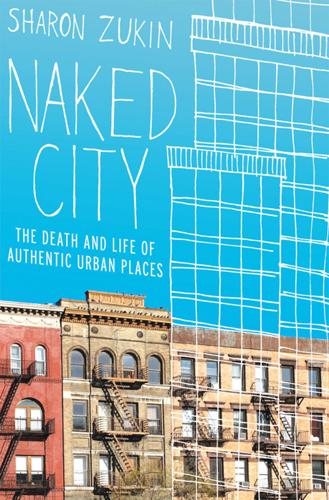
Naked City: The Death and Life of Authentic Urban Places
by
Sharon Zukin
Published 1 Dec 2009
Despite the influx of young people, or “studentification,” longtime residents felt they benefited from this kind of upscaling. Neither did residents complain about residential gentrification. Because new apartment houses took the place of factories and other commercial buildings, some of which were already partly empty, few residents were displaced. Moreover the BID repeatedly evoked a narrative of narrow escape from urban decay, representing the area’s earlier incarnation as unsafe despite its low crime rate compared to other districts of the city. For all these reasons most neighborhood residents and community organizations did not speak out against privatization. Instead, they credited the BID for Union Square’s “dramatic turnaround.”20 The issue that finally stirred protest was the BID’s long-simmering plan to renovate a stone pavilion that had been part of the old speakers’ platform at the north end of the park and transform it into a white-tablecloth restaurant.
…
If the social life of the streets is truly important, the state should make sure that all the men and women who use the streets have affordable rents so they can continue to live in their neighborhood. It was easier, at the end of the past century, to see the shards of both origins and new beginnings in urban decay. Though few city dwellers want to return to those years of abandoned houses and dangerous streets, reclaiming our origins in the small scale of old buildings, the low rents of working-class neighborhoods, and fewer corporate names would take us a long way toward regaining that era’s strong sense of authenticity.

The Power Law: Venture Capital and the Making of the New Future
by
Sebastian Mallaby
Published 1 Feb 2022
The two never again set foot inside the company that they had founded. Bosack, once described by Lerner as an “alien,” went on to fund efforts to discover extraterrestrial intelligence.[87] Lerner channeled her energy into a successful cosmetics brand called Urban Decay, which challenged the “Barbie” aesthetic of the beauty-industrial complex. One Urban Decay product was a nail polish named Bruise. It was a fitting coda for a fighter. The firing of Cisco’s founders became part of Valley mythology. It was supposedly the moment when venture capital revealed itself in all its ruthlessness. Valentine himself did much to feed this story line, cultivating the image of the tough guy who canned people.
…
Rowe Price, 289, 346, 349 Trump, Donald, 402, 403 Tsai, Joe, 226–27, 228–29, 232–33 Tsinghua University, 238, 242 Tung, Hans, 225 23andMe, 313, 383 Twilio, 333 Twitter, 12, 211, 298, 307, 385, 452n TX-0 (computer), 19, 28 Tyson, Mike, 347 U Uber, 349–71 Andreessen Horowitz’s investment, 353–55, 378 Benchmark Capital’s investment, 172, 349–56, 358–71, 372, 380, 440n, 458n, 459n blitzscaling, 357–59, 362, 364, 385, 387 in China, 362–63, 364 Didi Kuaidi, 362, 363, 364, 459n Founders Fund and, 211, 444n Greyball, 365–66, 369, 459n Gurley’s attack and resignation of Kalanick, 366–69 Gurley’s critique of, 361–63, 373 IPO, 372–73 Menlo Ventures investment, 354, 355–57, 368 Son’s investment, 370–71 toxic culture of, 360, 365–66 UberX, 357–58 Ungermann, Ralph, 107–8 Ungermann-Bass, 107–8, 113, 129, 203, 432n unicorns, 13–14, 289, 296, 303, 304, 372, 414 Gurley’s critique of, 361–63, 373, 458–59n WeWork, 342, 343, 346–47 Union Street Railway, 24 Unity, 309, 313 university endowments, 62, 416n Sequoia’s Heritage funds, 321, 333–36 University of California, San Francisco (UCSF), 73, 75 University of Chicago, 49 University of Illinois, 20, 144–45, 200, 237 University of Virginia, 216 Urban Decay, 117 Usenet, 436n UUNET, 132–44, 148, 175, 179, 286, 436n V Vacuum Foods, 25 Valentine, Donald, 60–66, 79–80, 97 Apple investment, 83–87, 90–91, 96, 160–61, 428n, 430n Atari investment, 62–63, 64–66, 80, 96, 379, 426n background of, 60–61 Botha and, 306 Capital Group, 425n, 426n Cisco investment, 113–19, 131, 158, 379, 435n Facebook investment, 194–95 founding of Sequoia, 60–62 fundraising, 61–62, 92, 394 Horowitz compared with, 296 retirement of, 160, 304 stage-by-stage financing, 60, 66, 80 Yahoo investment, 160 Vassallo, Trae, 269–70, 271 Veit, Stan, 82–83, 87 Venrock, 51, 71, 86–87, 88, 90–91, 229 venture boom, 93, 96–97, 111 venture-capital mindset, 14 “venture capital,” use of term, 418n venture hubs, 15, 18, 95–96, 391–92 Viaweb, 191–92, 217, 218–19 viral marketing, 443n Vivendi, 159 VKontakte, 274–475, 287 volatility selling, 415n W Waite, Charles P., 31 Walker’s Wagon Wheel, 54, 96, 106, 432n Wall Street Crash of 1929, 24 Wall Street Journal, 226, 296, 339 Walmart, 12 Wang, Jeff, 332–33 Wang Laboratories, 423–24n Wang Xing, 242–48 Warner Communications, 66, 80 Washington Post, 182, 402 Washington Post Company, 188, 258–60 weak ties, 95 WEB, 203 Webvan, 178, 184 Weinreich, Andrew, 20 Welch, Jack, 364 Wellfleet Communications, 112, 118 West, Donda, 235 West, Kanye, 235 WestBridge Capital, 321 Western Association of Venture Capitalists, 27, 51, 419n WeWork, 342–49, 371–73, 457n Benchmark Capital’s investment, 172, 342–49, 353, 371–72, 457n governance and corruption issues, 343, 344–45, 359 IPO process, 372–73 JPMorgan Chase’s investment, 343–44 Son’s investment, 346–49, 370–73 super-voting rights, 344, 346, 359, 371–72, 373 Wharton School, 161, 244, 287, 290 WhatsApp, 304, 307–8, 314, 388 white-hot risks, 70, 75, 76, 80, 88, 128, 266, 383 Whitman, Meg, 167–69 Whitney, John Hay, 25–26, 29, 418n Wikipedia, 317 wild-man risk, 59 Wilson Sonsini Goodrich & Rosati, 329 Wirehog, 195, 196, 207, 219, 254, 260 Wolfe, Josh, 382–83 Wolfe, Tom, 52–53, 56, 57 Wolff, Stephen S., 436n World War II, 18, 25, 28 World Wide Web, 19–20 Wozniak, Steve, 82–85, 86, 90, 100 Wu, John, 232–33 X X.com, 201–7 Xerox’s Palo Alto Research Center (PARC), 82, 96, 99, 100 Xiaomi, 224, 383 Xi Jinping, 302–3, 395 Xoom, 306, 313 Xu, Kathy, 235–37, 239, 245–46, 279 Y Yahoo, 149–61 Draper and, 150, 152, 341 Google and, 181 IPO, 156, 157, 438n, 439n sales and marketing, 153–54, 438n Sequoia Capital’s investment, 150–54, 155–56, 160–61, 170, 173, 206, 440n Son’s investment, 155–60, 175, 277, 347, 348, 439n Viaweb acquisition, 191 Yahoo Japan, 159 Yale Law School, 226 Yale University, 150, 225, 226, 334 Yandex, 287 Yang, Jerry, 150–60.

New Localism and Regeneration Management
by
Jon Coaffee
Published 1 Mar 2005
But many of these initiatives were oriented to developing land and property. Enterprise zones, from 1980, were “managed” (if that is the right word for a programme whose philosophy was not to intervene) directly by the civil service. The urban development corporations, also charged with reviving areas of urban decay, the first also in 1980 but an important group delayed till 1986, had boards of directors from the private sector, but little involvement of local authorities or community groups. The city challenge companies that ran from 1992 to 1998 did involve, as board members, local councillors and representatives of organisations active in the areas concerned.

The Ten Million Dollar Getaway: The Inside Story of the Lufthansa Heist
by
Doug Feiden
Published 1 Sep 2014
Similarly, when Tony Ducks heard that his orders had been carried out and that there was one more entry in the police blotter, he would shake his head sadly, and his voice would be tinged with disapproval: “We live in a jungle.” Even the most hot-headed young prosecutor would be hard pressed to prosecute on the basis of that, for Tony Ducks’ attorneys would be quick to point out that their client was merely offering a social commentary on the alarming pace of urban decay. “You’ll read about him in the papers,” Tony Ducks had said, and those seven little innocuous words were enough to touch off a mob bloodbath. Stacks Edwards lived in the Ozone Park neighborhood of Queens. So did Two-Gun Tommy. Tony Ducks lived up in Whitestone, at the other end of the borough, exactly 9.1 miles away as the New York City pigeon flies.
…
But he moved slowly, warily though his mansion, because he was quite shaken up over a few incidences of random violence in recent months. It was all very upsetting to his health, he said. When the news of the Flatlands Tony hit reached him, he closed his eyes and sadly shook his great, gray head. It was just one more example of urban decay. “We live in a jungle,” he said. Jimmy the Gent was also disturbed by the killings—genuinely so. He had, after all, lost some pretty good drinking buddies. But he had no say in these matters. Even though he had planned the raid on Building 261, it didn’t belong to him anymore. It was all decided elsewhere.

Billionaires' Row: Tycoons, High Rollers, and the Epic Race to Build the World's Most Exclusive Skyscrapers
by
Katherine Clarke
Published 13 Jun 2023
A steady stream of tourists walking between Central Park and Times Square discarded litter, which would be trodden into the ground by other fanny-pack-wearing visitors behind them. Miller, the appraiser, lived in a building on West 60th Street right behind the convention center in the 1980s. “The signs of urban decay were just intense,” he said. “I remember looking over it and thinking, ‘How, in such a beautiful city, can you have such a dilapidated structure to welcome so many people who are visiting Central Park?’ It just seemed out of place.” Efforts to sell the Coliseum by Metropolitan Transportation Authority (which took over from the Triborough Bridge and Tunnel Authority) started in the mid-1980s under Mayor Ed Koch and bled into Mayor Rudy Giuliani’s administration.
…
He spent much of his childhood in Israel before moving to the Bronx as a teenager. Starting in the 1970s, he had been a pioneer in the world of tenant representation as the director of litigation at South Bronx Legal Services, where he represented residents of buildings in a neighborhood that had become a flashpoint of poverty and urban decay where landlords were steamrolling low-income tenants. Rozenholc was no stranger to a tough fight or even intimidation tactics. Once, while in housing court representing South Bronx tenants who were on a rent strike because of conditions in their building, Rozenholc looked to his right and saw the opposing landlord pointedly counting out bullets in his hand.

Pocket Rough Guide Istanbul
by
Rough Guides
Published 26 Nov 2023
Mini Müzikhol Mini Müzikhol < Back to Beyoglu and Taksim Beşiktaş and Ortaköy Cafés Restaurants Clubs & venues The waterfront Dolmabahçe Palace, a grandiose European-style residence for the Ottoman Empire’s last sultans, is the major tourist attraction this side of the Golden Horn. Northeast along the Bosphorus-front is Beşiktaş. Home to the most working class of the city’s “big three” football teams, it’s rapidly emerging from a cocoon of urban decay and possesses a youthful vibrancy thanks to its huge student population. Further along is Yıldız Park, a vast, wooded park dotted with imperial pavilions. Beyond it, Ortaköy retains some feel of the fishing village it once was. It has a lovely Baroque-style mosque and a lively waterfront lined with posh cafés.

Life Inc.: How the World Became a Corporation and How to Take It Back
by
Douglas Rushkoff
Published 1 Jun 2009
Housing Authority lent money to private corporations for slum clearance, while giving local municipal governments authority over whether and where to build public housing. No one wanted a housing project near his own community, so the corporations and municipalities used the financing to tear down any slums near expensive suburbs and rebuild them as projects back in the city. Urban decay got worse, and the suburbs got even more segregated. If money had been put toward rehabilitating existing slums instead of tearing them down and building new ones, it might have created fewer construction jobs and lower profits, but it would have also prevented this very rapid redrawing of the residential map for the benefit of white suburban property values and the developers who exploited them.
…
Instead of working with one another to create value for our communities, we work against one another to help corporations extract money from our communities. When the city of Buffalo, New York, lost dozens of factories to outsourcing along with their manufacturing jobs, it became a national leader in bankruptcies, foreclosures, and urban decay. Over 108 collection agencies have opened to address the problem in Erie and Niagara Counties, hiring over 5,200 phone operators to track down and persuade debtors like themselves to fix their credit. As interest rates on these debts rise to upwards of 40 percent, more wealth is transferred from the poor to the rich, from the real economy to the speculative economy, and out of circulation into the banking ether.

Vanishing New York
by
Jeremiah Moss
Published 19 May 2017
The story of the battle for New York’s soul is here in the South Bronx: deindustrialization and the loss of working-class jobs, redlining, white flight, the creation of slums, Robert Moses’s meat axe cleaving neighborhoods with the Cross Bronx Expressway, white backlash, planned shrinkage, benign neglect, and “the Bronx is burning.” In the 1970s, the area became synonymous with urban decay and violence, Fort Apache, the jungle. An “international code word for our epoch’s accumulated urban nightmares,” in the words of South Bronx native Marshall Berman, it was the no-man’s-land to which Ed Koch’s brave pioneers would never dare venture. Joe Flood, author of The Fires, reported: “Seven different census tracts in The Bronx lost more than 97% of their buildings to fire and abandonment between 1970 and 1980.”
…
We want to absolutely encourage as many services as possible to follow us into the South Bronx.” To revitalize the Bronx, city leaders gave the borough its own High Line. Of sorts. Built in 1848 and closed around 1970, the elegant steel and stone High Bridge spans the Harlem River, connecting the Bronx to upper Manhattan. In 2015, reclaimed from urban decay and scrubbed clean, it reopened to pedestrians and bicyclists. Immediately, the High Bridge was compared to Chelsea’s High Line. At the reopening, Bronx Borough President Ruben Diaz Jr. said, “Downtown may have the High Line, but uptown we have the High Bridge.” The Post announced, “Finally, Uptown Gets Its Own High Line.”
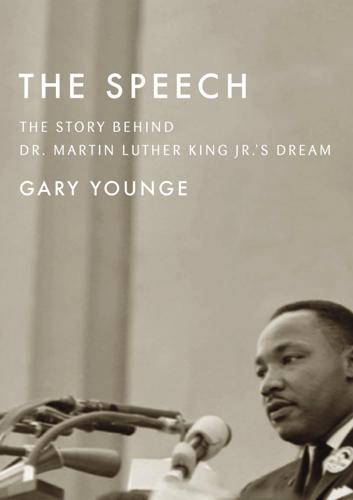
The Speech: The Story Behind Dr. Martin Luther King Jr. S Dream
by
Gary Younge
Published 11 Aug 2013
From sit-ins and freedom rides we have gone into rent strikes, boycotts, community organization, and political action. As a consequence of this natural evolution, the Negro today finds himself stymied by obstacles of far greater magnitude than the legal barriers he was attacking before: automation, urban decay, de facto school segregation. These are problems which, while conditioned by Jim Crow, do not vanish upon its demise. They are more deeply rooted in our socio-economic order; they are the result of the total society’s failure to meet not only the Negro’s needs, but human needs generally. That’s not to say that King made no effort to shift the terrain of the debate.
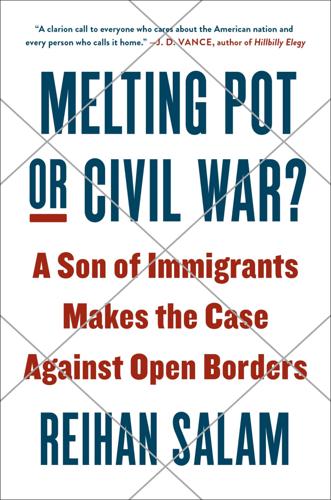
Melting Pot or Civil War?: A Son of Immigrants Makes the Case Against Open Borders
by
Reihan Salam
Published 24 Sep 2018
And in the summer of 1991, riots broke out in Crown Heights after an Orthodox Jewish man crashed his car into the home of a Guyanese immigrant family, killing the family’s young son. These incidents were only the most vivid manifestations of a general sense that the city was coming undone. Throughout these years, violent crime was terrifyingly high, and Brooklyn, my native borough, was a watchword for joblessness and urban decay. In The Bonfire of the Vanities, one of Tom Wolfe’s characters memorably described Brooklyn’s remaining bourgeois enclaves as little white Hong Kongs amidst a sea of black and brown poverty. These were years when New Yorkers of all colors fled the city in droves, and those of us who remained feared that class and racial conflict might at any moment spin out of control.

The View From Flyover Country: Dispatches From the Forgotten America
by
Sarah Kendzior
Published 24 Apr 2015
“I need the brilliance of color to get close to people, to stir up a sense of life experience and heighten their sense of presence,” Grosse proclaims. “People,” in Grosse and Thomas’s formulation, are not those who actually live in north Philadelphia and bear the brunt of its burdens. “People” are those who can afford to view poverty through the lens of aesthetics as they pass it by. Urban decay becomes a set piece to be remodeled or romanticized. This is hipster economics. Influx of Hipsters In February, director Spike Lee delivered an impassioned critique—derisively characterized as a “rant” by U.S. media outlets—on the gentrification of New York City. Arguing that an influx of “… hipsters” had driven up rent in most neighborhoods—and in turn driven out the African-American communities that once called them home—he noted how long-dormant city services suddenly reappeared: “Why does it take an influx of white New Yorkers in the south Bronx, in Harlem, in Bed Stuy, in Crown Heights for the facilities to get better?
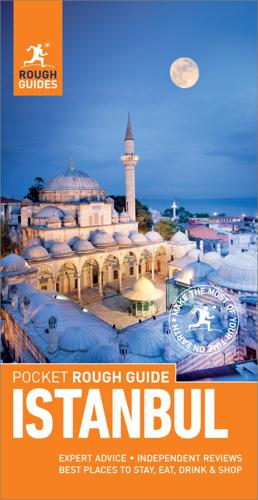
Pocket Rough Guide Istanbul (Travel Guide eBook)
by
Rough Guides
Published 24 May 2019
< Back to Beyoğlu and Taksim Beşiktaş and Ortaköy Café Restaurants Clubs & venues The waterfront Dolmabahçe Palace, a grandiose European-style residence for the Ottoman Empire’s last sultans, is the major tourist attraction this side of the Golden Horn. Northeast along the Bosphorus-front is Beşiktaş. Home to the most working class of the city’s “big three” football teams, it’s rapidly emerging from a cocoon of urban decay and possesses a youthful vibrancy thanks to its huge student population. Further along is Yıldız Park, a vast, wooded park dotted with imperial pavilions. Beyond it, Ortaköy retains some feel of the fishing village it once was. It has a lovely Baroque-style mosque and a lively waterfront lined with posh cafés.
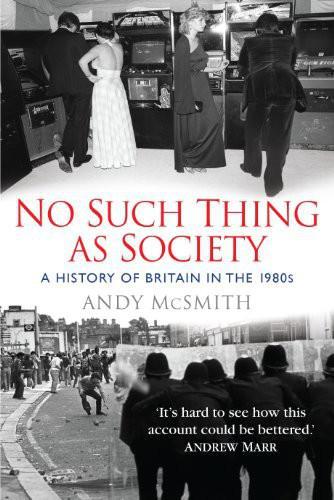
No Such Thing as Society
by
Andy McSmith
Published 19 Nov 2010
But after a few tumultuous days, it all seemed to fizzle out, in the quiet euphoria of the royal wedding, leaving the authorities to argue over what, if anything, the riots said about British politics. On 13 July, Margaret Thatcher visited Toxteth, saw the wreckage, but did not see anyone driven to desperation by joblessness and urban decay. She saw a pleasant enough city centre ruined by its feckless inhabitants. She recalled: The housing there was by no means the worst in the city. I had been told that some of the young people got into trouble through boredom and not having enough to do. But you had only to look at the grounds around those houses with the grass untended, some of it waist high, and the litter, to see that this was a false analysis.
…
Of their second album, More Specials, one critic wrote: ‘The second side is curious, disorientating and quite unclassifiable . . . brave and perverse’.15 On tour, arguments erupted between members of the group, fuelled by drug abuse, and their gigs threatened to degenerate into violence because of their rash practice of encouraging fans to storm the stage. In Cambridge, fights broke out between fans and security guards, after which Dammers and the group’s vocalist, Terry Hall, were arrested for incitement and fined £400 each. The constant tension, the chaos and the scenes of urban decay that they witnessed on tour evidently put Dammers in a grim frame of mind, and spurred him to produce a song full of desolation and impending doom called ‘Ghost Town’, which topped the charts in July 1981. Twenty-one years after its release, a writer in the Guardian asserted that it ‘remains the most remarkable number one in British chart history’.16 Jerry Dammers had assumed that success would put an end to the nearhomicidal in-fighting among the members of the band, and that the others would acknowledge him for the extraordinary artist that he undoubtedly was.
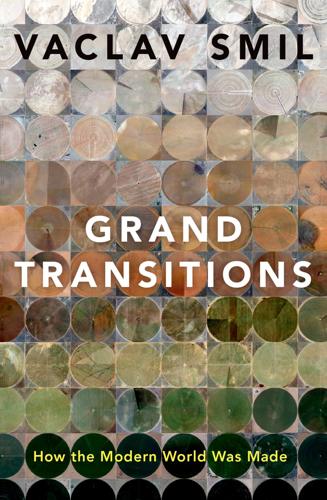
Grand Transitions: How the Modern World Was Made
by
Vaclav Smil
Published 2 Mar 2021
Decennial censuses show London’s population growing from nearly 1.1 in 1801 to 8.6 million just before World War II and then declining to 6.8 million by 1981: the continuation of that trend would have reduced the capital to only about 2.1 million by 2050 (Smil 2019a). But the new wave of international immigration (part of the post-1980 globalization) lifted the total to 8.2 million by 2011. Similarly, New York, once the synonym for economic retreat, urban decay, and depopulation, has been revitalized by post-1990 immigration. By 2015 nearly 38% of the people living in the five boroughs were foreign born (the largest groups coming from the Dominican Republic, China, Mexico, and Jamaica) and they provided 45% of the city’s labor force (NYC Planning 2017).
…
In the early 1720s food required about 80% of the family income; four decades later the share was still about 75% even among big-wage earners, with less than 15% spent on clothes. Earnings increased in the 19th-century cities but the progress toward consumer society was slow. Perrot and Guerrand (1990) describe crowding, slums, peripheral shantytowns, and rapid urban decay that brought little improvement for masses of new migrants as observers wrote about workers living like animals. Conditions remained primitive in many villages: houses with thatched roofs and rickety outside staircases to access the upper floor that were as much workshops and storage rooms as dwellings.

Buried in Treasures: Help for Compulsive Acquiring, Saving, and Hoarding
by
David Tolin
,
Randy O. Frost
and
Gail Steketee
Published 14 Dec 2013
Then, when lots of windows are broken, they figure that the area is rundown and therefore it’s OK to do all kinds of rotten things. The broken windows theory has since been applied in police work and urban development, most visibly in New York City, where attention to smaller, “quality-of-life” problems (such as repairing signs of urban decay and stopping low-level crimes) seems to have reduced the occurrence of more serious crimes. What does the broken windows theory have to do with you? Think about how your actions are influenced by clutter in your home. Now think about how your actions are influenced by cleanliness. When you have something in your hand—say, a piece of mail—it’s very easy to put that item on top of a pile of clutter.
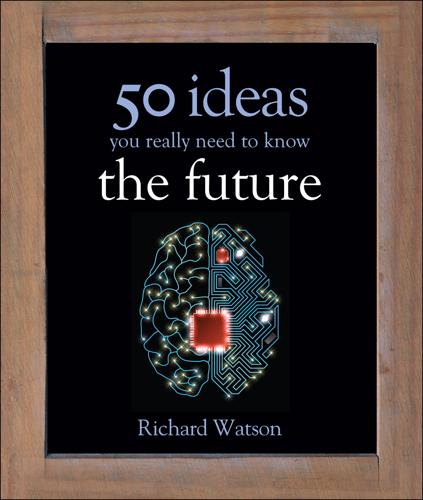
50 Future Ideas You Really Need to Know
by
Richard Watson
Published 5 Nov 2013
If crime in specific areas reaches epidemic proportions it might at some point make more sense to turn the whole area into an informal prison rather than attempting to identify, then export troublemakers to secure facilities elsewhere. Other possibilities might include the tagging on all residents by postcode or perhaps once again building prison ships or creating prison countries. “Traditionally, problems of urban decay and associated issues, such as crime, have been seen as domestic issues best dealt with by internal security or police forces. That will no longer be an option.” Richard Norton, Naval War College Review People power But it’s not all bad news. If governments or aid agencies cannot provide food, water, shelter or other necessities, people will often organize these things for themselves.

Sweetness and Light: The Mysterious History of the Honeybee
by
Hattie Ellis
Published 25 Apr 2006
In his 1977 installation Honey Pump at the Work Place, Beuys pumped honey in transparent pipes around the Museum Fridericianum in Kassel, Germany. Here, during the hundred days of the artwork, people from all over the world and from many walks of life—economists, community workers, musicians, lawyers, actors, trade unionists—discussed issues such as nuclear energy, urban decay, and human rights. This was Beuys’s Free International University, and it was about changing the world: the ideas being discussed should pump through society just as the honey circulated the building. The meaning of such “actions” relied on the ideas behind them, and the pieces later displayed in museums—photographs, blackboards of scribbles spray-fixed for posterity—are remnants of almost shamanistic events.
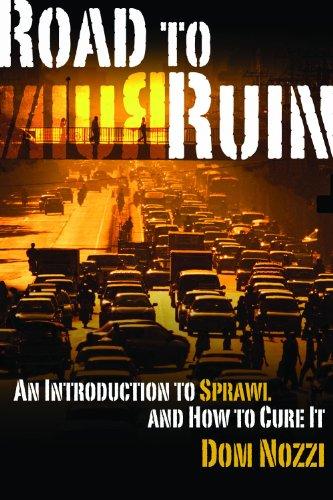
Road to ruin: an introduction to sprawl and how to cure it
by
Dom Nozzi
Published 15 Dec 2003
Surface parking lots take up valuable city land where there could be stores, offices, civic buildings, or plazas—uses that commonly add energy to a downtown, help provide the verticality needed to form outdoor rooms, and bring in more property tax revenue. Surface parking, by contrast, has a deadening effect. If Richard Ratcliff was right when he said that “[i]n a healthy city there is a constant replacement of less intensive uses by more intensive uses,”4 a city with a growing proportion of parking is a sign of urban decay.Until the recent past, the regulations in nearly all cities required at least “X” number of parking spaces per square foot of retail or office, which in fact far exceeded demand except on a few major shopping days. However, developers increasingly tend to oversupply parking—often exceeding even the generous requirements of most communities.

Working
by
Robert A. Caro
Published 8 Apr 2019
The residents of the apartment houses that bordered the mile-long excavation on both sides—perhaps one hundred buildings—began to move out, and as more and more moved one of the principal reasons for staying—friends who lived near you—began to vanish, and so did the sense of community. Still more tenants disappeared from East Tremont. Some landlords were happy to see them leave the rent-controlled apartments, and replaced them with welfare families, who demanded fewer services and moved more often, so that rents could be raised more often. The gyre of urban decay spiraled and widened, faster and faster, and more and more residents began to move. East Tremont became a vast slum. I spent many days and weeks, terrible days and weeks, walking around that slum. I had never, in my sheltered middle-class life, descended so deeply into the realms of despair.

The Great Reset: How the Post-Crash Economy Will Change the Way We Live and Work
by
Richard Florida
Published 22 Apr 2010
As…I drove through it, I saw the images of the postapocalyptic city to which we’ve all become accustomed: the deserted streets, overgrown lots and empty storefronts with boarded-up windows and faded signs for long-closed stores and restaurants like Pick ’n Party, Jet King Chop Suey and African hair braiding. As familiar as these images have become (just punch “Detroit” and “urban decay” into YouTube to see them), it’s only when you’re actually riding around Detroit and can see that this goes on for block after block, mile after mile, that the profundity of this idea—the death of a city—really sets in. When work disappears, city populations don’t always decline as fast as you might expect.

Radical Cities: Across Latin America in Search of a New Architecture
by
Justin McGuirk
Published 15 Feb 2014
At the height of the attempts to extradite Escobar to the US in the early 1990s, he was waging a campaign of terror against the state in Medellín, killing hundreds of policemen and setting off car bombs every week. In 1993, the year Escobar was killed, the homicide rate was an unprecedented 311 per 100,000 citizens. What was extraordinary about Medellín was that throughout this period the city was still booming – this was not the violence of economic and urban decay. On the contrary, narco-profits were filtering into the economy through money laundering and property speculation. But one of the inevitable effects of the violence was a deeply segregated city. It affected everyone, but for those in the central and southern districts the northern comunas were literally a no-go zone.
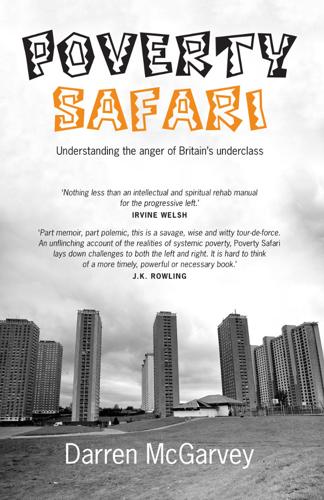
Poverty Safari: Understanding the Anger of Britain's Underclass
by
Darren McGarvey
Published 2 Nov 2017
Even the monstrosities that gave rise to the gritty stereotype weren’t all bad. But enough of them were – or still are – bad enough that their reputation, fair or not, precedes them. Like many hapless eras of human endeavour, it’s easy to look back in hindsight and sneer at those who naively approved a building programme that would come to symbolise urban decay and social dereliction: the idea of stacking poor people vertically, which probably seemed rather clever in the mid-20th century, when decades of population growth, fuelled by consecutive industrial revolutions, was the curtain raiser to a new rotating cast of social problems that would characterise poverty for decades to come.
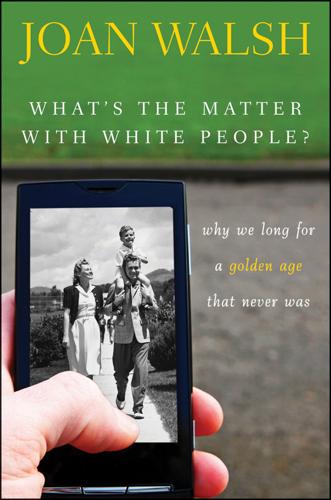
What's the Matter with White People
by
Joan Walsh
Published 19 Jul 2012
Clinton headed to Los Angeles to tour the scenes of destruction with Representative Maxine Waters, who represented the area in Congress. Whereas President Bush denounced the “anarchy” as “purely criminal” and never bothered to visit, Clinton blamed the Reagan-Bush administrations for “more than a decade of urban decay,” intensified by federal spending cuts. After Bush press secretary Marlin Fitzwater blamed the unrest on “the Great Society,” Clinton shot back, “Republicans have had the White House for twenty of the last twenty-four years, and they have to go all the way back to the sixties to find somebody to blame.

This Chair Rocks: A Manifiesto Against Ageism
by
Ashton Applewhite
Published 10 Feb 2016
If you’re old, you’re not good; if you’re paraplegic, you’re not good; if you’re black, you’re not good.”36 These lines are never more clearly drawn than during natural disasters, when poor people, people of color, and older people die in disproportionate numbers. Chicago’s 1995 heat wave claimed 729 lives. Most of the victims were olders living in the heart of the city, isolated by urban decay, afraid to open doors and windows and unable to afford air conditioning. Blacks were more likely to die than whites, who were more likely to die than Latinos, who tend to live in densely populated neighborhoods and face less isolation. Of the nearly 1,000 people who died when Hurricane Katrina hit the Gulf Coast in August, 2005, almost half were seventy-five or older, and more than half of those were black.

Listen, Liberal: Or, What Ever Happened to the Party of the People?
by
Thomas Frank
Published 15 Mar 2016
It should not surprise us that the liberal class regards the university as the greatest and most necessary social institution of all, or that members of this cohort reflexively propose more education as the answer to just about anything you care to bring up. College can conquer unemployment as well as racism, they say; urban decay as well as inequality. Education will make us more tolerant, it will dissolve our doubts about globalization and climate change, it will give us the STEM skills we need as a society to compete. The liberal class knows, as a matter of deepest conviction, that there is no social or political problem that cannot be solved with more education and job training.

Infinite Detail
by
Tim Maughan
Published 1 Apr 2019
It was then he started to really pay attention, to pick out tones and sounds, to understand form and structure. Dark afro futures were made real, musical stories with life breathed into them. Before the crash it had seemed impossible to separate Bristol from drum and bass; afterward the connection was pure logic. A soundtrack for celebrating the urban decay of the twenty-first century, for dancing in the new ruins of industrial civilization, translated now as a soundtrack for everyday life. It was also the default option now, in many ways, Tyrone understood. He never denied the reality of that, never tried to kid himself. In many ways this was the last music on record, the last throw of urban energy and expression before the shift came.
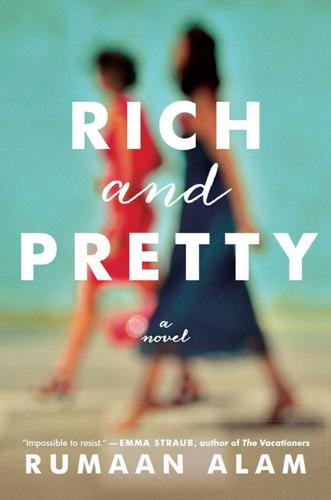
Rich and Pretty: A Novel
by
Rumaan Alam
Published 6 Jun 2016
Sarah’s surprised Lauren picked up. She’s usually harder to get. “I was just thinking about you. That’s so weird. But so perfect.” “Good things, I hope.” “The greatest, actually. Do you remember our Goth phase? Please tell me you remember our Goth phase.” “That hardly qualifies as a phase,” Sarah says. “We bought some Urban Decay and went to a Nick Cave show.” “We were so dark and mysterious.” Lauren laughs. Sarah shrugs, forgetting Lauren can’t see it. “Adolescence is a dark time. We were experimenting.” “It’s funny to think about. It was unlike us. It was unlike you. You were . . .” Lauren trails off. “I was . . . ?”
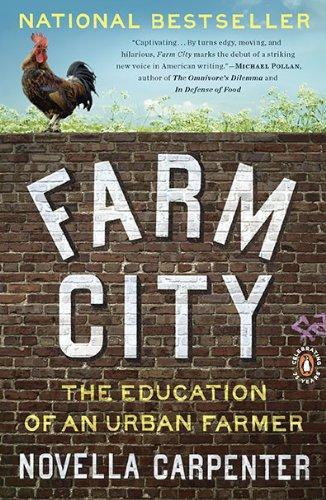
Farm City: The Education of an Urban Farmer
by
Novella Carpenter
Published 25 May 2010
All these people out on the street—they were characters I had never met in Seattle, or in our more suburban house in the Oakland hills. I was curious, and yet I had to admit it: they scared me. Could I really live here? Walk around the streets without worrying about getting mugged? The place was a postcard of urban decay, I thought as we turned down 28th Street. Cheetos bags somersaulted across the road. An eight-story brick building on the corner was entirely abandoned and tattooed with graffiti. Living here would definitely mean getting out of my comfort zone. We came to a stop in front of a gray 1905 Queen Anne.
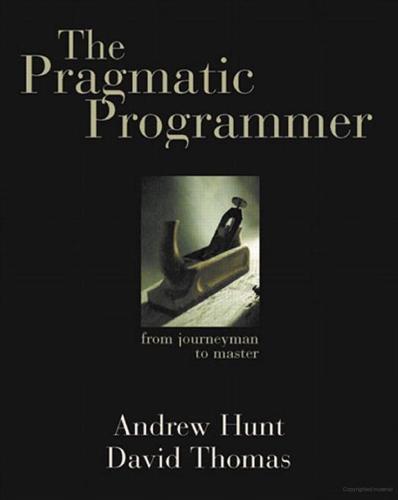
The Pragmatic Programmer
by
Andrew Hunt
and
Dave Thomas
Published 19 Oct 1999
Yet there are other projects that, despite enormous difficulties and constant setbacks, successfully fight nature's tendency toward disorder and manage to come out pretty well. What makes the difference? In inner cities, some buildings are beautiful and clean, while others are rotting hulks. Why? Researchers in the field of crime and urban decay discovered a fascinating trigger mechanism, one that very quickly turns a clean, intact, inhabited building into a smashed and abandoned derelict [WK82]. A broken window. One broken window, left unrepaired for any substantial length of time, instills in the inhabitants of the building a sense of abandonment—a sense that the powers that be don't care about the building.
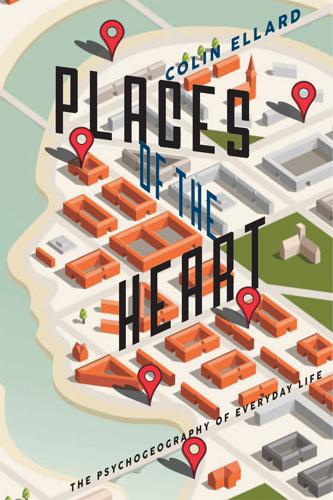
Places of the Heart: The Psychogeography of Everyday Life
by
Colin Ellard
Published 14 May 2015
An epidemiological study,” published in the Journal of Affective Disorders (2013, Volume 150, pages 1019–1024). 4Florian Lederbogen and a long list of collaborators including Andreas Meyer-Lindenberg published a groundbreaking article on the effects of urban stresses on amygdala activation titled “City living and urban upbringing affect neural social stress processing in humans,” in the journal Nature (2011, Volume 474, pages 498–501). A readable summary of their findings along with related material can be found in an article by Allison Abbott titled “Stress and the City: Urban Decay,” in Nature (2012, Volume 490, pages 162–164). 5Allison Abbot’s Nature article, cited in the previous note, also provides a short summary of the work by Jim van Os on mental pathology and geotracking. 6My discussion with Ed Parsons appeared in Land Rover’s magazine Onelife (2014, Issue #28, pages 40–43) Available at: http://www.landroverofficialmagazine.com/#!

Cape Town After Apartheid: Crime and Governance in the Divided City
by
Tony Roshan Samara
Published 12 Jun 2011
This simple and recurring truth only reinforces how powerful certain articulations of race, youth, and masculinity can be when combined in contested, tense, urban spaces; it is at this intersection that the governance of security is most volatile but, perhaps, also most productive. The meaning of black youth, from this perspective, is not entirely uniform across city spaces; rather, it shifts with the setting. In the city center, street children figured prominently and, relative to their numbers, disproportionately as ideological markers of urban decay and danger during the early days of the Cape Town Partnership, portrayed by proponents of downtown revitalization as urban terrorists. Their demonization in the English-language media and by renewal officials reached such a pitch that street children, and the AIDS orphans increasingly blamed for swelling their ranks, were referred to as a looming threat not only to the city center, but to the entire urban social fabric.

Days of Destruction, Days of Revolt
by
Chris Hedges
and
Joe Sacco
Published 7 Apr 2014
Through her efforts, Lawrence obtained some affordable housing,25 but the damage was done. Economic segregation is the new, acceptable form of segregation. And it turned New Jersey into one of the most segregated states in the nation. Mount Laurel, seized by developers, became a haven for whites fleeing urban decay. Its original inhabitants could no longer afford to live there. The blacks were driven from their land, forced into squalid internal colonies such as Camden. “Camden, I would say, is a casualty of capitalism,” Father Doyle said as we sat one afternoon in his rectory. “It’s what falls off the truck, and can’t get back on the truck.”
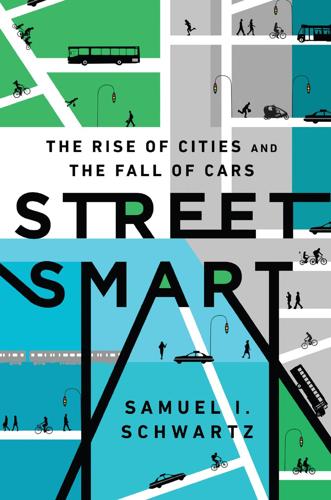
Street Smart: The Rise of Cities and the Fall of Cars
by
Samuel I. Schwartz
Published 17 Aug 2015
The miles of uninterrupted driving Risse described were, in 1897, intended for horse-drawn carriages; that is, a bridle path. By the time the Concourse opened, in 1909, the automobile age was well begun. By the 1940s, America was embracing it like nowhere else on Earth. That’s when another “through motor route” transformed the borough for which the Grand Concourse had been emblematic into a shorthand proxy for urban decay, and became an enduring symbol of the conflict over the ownership of America’s roads. The intersection between the north-south Grand Concourse and the east-west Cross-Bronx Expresswaya would come to represent not just one battle over the City Beautiful, but a rallying cry in a decades-long war.

Alpha Girls: The Women Upstarts Who Took on Silicon Valley's Male Culture and Made the Deals of a Lifetime
by
Julian Guthrie
Published 15 Nov 2019
Which is how Eve came into being—and how Rao and Naficy found themselves in the Menlo conference room, with Sonja and her fellow VCs awaiting their pitch. The two women told the group that they had secured online distribution agreements with a range of high-end brands, from Versace, Bvlgari, Calvin Klein, and Elizabeth Arden to Urban Decay, Club Monaco, and Hard Candy. They had hired industry leaders, including former Glamour beauty director Charla Krupp, to provide an editorial point of view on must-have products for women. They had also picked up the do’s and don’ts of deal making: When visiting executives at Chanel, for instance, they made sure to wear only Chanel makeup and nail polish.
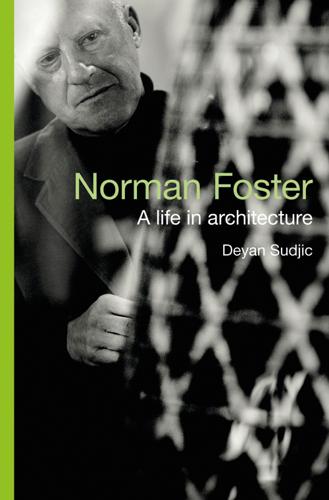
Norman Foster: A Life in Architecture
by
Deyan Sudjic
Published 1 Sep 2010
Even Yale’s gymnasium is built in exuberant gothic style, and it comes equipped with a tower not much less imposing than that of Durham Cathedral. It is, in short, a university that might have been imagined by Ralph Lauren. But beyond its gothic zone, New Haven in Foster’s day was suffering from the early symptoms of the urban decay that Jane Jacobs identified in her book, The Death and Life of Great American Cities: a rotting centre and spreading affluent suburbs. Away from the security of the city lights and the campus police it would become a troubled place to live after the race riot of 1967. There were whole streets in New Haven in which the only functioning buildings were adult cinemas.

Zeitgeist
by
Bruce Sterling
Published 1 Nov 2000
He was dragging them from the booze-sticky depths of their private realms, and into the Christmas-twinkling light of a greater awareness. Each time the lighter flared, they leapt out of their alcoholic shrouds. Teeth gone, bearded lips slack. Windburns from a lifetime of sheepherding. Grizzle and grease, the dust, the smell. Scarred eyelids, spiked eyebrows. Caries, vitamin deficiency. Rural decay, urban decay. Then—right before him—here was the man. The man who looked more like the others than the others could ever quite look. He had a face that was a distillation of all lost, invisible faces. He possessed a deep, pristine air of loss, a sense of disconnection so final and complete that there was an eerie joy to it, like poetry in a dead language.
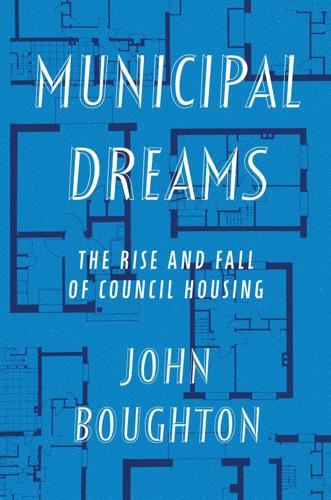
Municipal Dreams: The Rise and Fall of Council Housing
by
John Boughton
Published 14 May 2018
We need to counter these pernicious negative stereotypes … We are not going to be bullied into giving up good sound insulation, light, views and space because of exterior neglect and delays in re-housing growing families due to current housing scarcity.6 A potent symbol of the stigmatisation of the Aylesbury Estate (though here it merely stood as a cipher for all such modernist, multi-storey estates) was the Channel Four ident, first deployed in 2004, which presented a truly dystopian vision of its ‘streets in the sky’, recreated here with every imaginable trope of urban decay as litter-strewn, graffiti-laden, dank and threatening. The residents later produced their own more positive portrayal of the estate’s decks and community in rebuttal.7 Of course, it wasn’t Shangri-La. How could it be, given all that had happened to council housing since 1979? It was officially rated as one of the poorest inner-city areas of the capital and, while around one-third of residents had lived on the estate for over twenty years (an important reminder of the settled and ‘respectable’ community which persisted on demonised council estates), it had increasingly come to house a disadvantaged population, disproportionately from the black and ethnic minorities.

This Is Your Country on Drugs: The Secret History of Getting High in America
by
Ryan Grim
Published 7 Jul 2009
But they do show that during the peak of the eighties cocaine panic, the number of people using the drug recreationally remained relatively small. Critics of the Reagan-era response to drugs see these data as proof that the cocaine hysteria was cooked up by politicians and the media. It’s easier to blame poverty and urban decay on drugs and lock up the people than it is to treat the problem, goes the argument. And while there was certainly no shortage of scapegoating, the rise of cocaine in those years was a very real phenomenon. Although occasional use was declining—as it was for all drugs at the time—the number of people using an awful lot of the drug was increasing.

The Burning Land
by
George Alagiah
Published 28 Aug 2019
Yeoville was almost as old as the city itself, established in the 1890s as a lofty refuge from the dirty, chaotic and sometimes violent gold-mining town that was growing out of the veld below. Like much of the area around it, Yeoville had been through a familiar cycle of nineteenth-century gentility, fifties edgy chic and late-twentieth-century urban decay. Now it was a melting pot of African sounds and customs, a home for traders and traffickers alike. There was always talk of a renaissance and a few brave souls, like the trekkers of old, were taking a bet on its gentrification and moving in, not least because they couldn’t afford to live anywhere else in the city.

The Warhol Economy
by
Elizabeth Currid-Halkett
Published 15 Jan 2020
Increased globalization and technological advancements, which made it easy to transport materials across the world, meant that manufacturing firms were able to set up shop in developing countries that offered cheap labor and abundant resources. Countries like Brazil had perfected more advanced technologies in steel production, making Pittsburgh’s and Cleveland’s steel mills antiquated and comparatively expensive. U.S. cities were no longer competitive sites for manufacturing. Many of them rapidly became wastelands of urban decay, beset by massive unemployment and fiscal hemorrhaging, with abandoned plants and mills and hollowed out downtowns that bred crime. At the same time, something curious was afoot. Despite an overall national crisis in the manufacturing economy, some places had managed to not just survive but do really, really well.
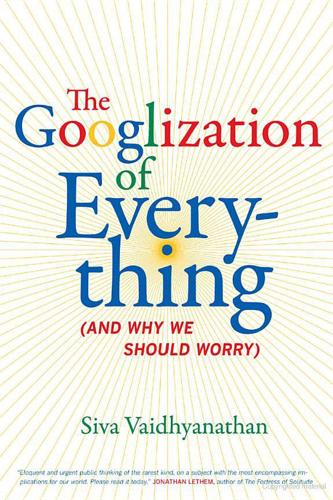
The Googlization of Everything:
by
Siva Vaidhyanathan
Published 1 Jan 2010
The Bangalore lawyer and media researcher Lawrence Liang describes this and other major cities in India, such as Hyderabad and New Delhi: “This urbanism in India has become a significant theatre of elite engagement with claims of globalization. . . . Imprints of the media industry like multiplexes, malls, and lifestyle suburbia go hand-in-hand with the cries of urban decay and pollution, and managing populations that are increasingly restless in the new arrangements.”59 And as 140 TH E G OOGL IZATION OF THE WORL D the media scholar Ravi Sundaram has said, “Cities are being actively remapped” in India. “You have sections of the city that are meant only for the elite, with their own power supply, air conditioning, and private security.”60 So although a small, but growing segment of Indian society is firmly embedded in the cosmopolitan flows of culture, knowledge, and power as a result of the remarkable investments of the past twenty years in India, the poor pay a disproportionate price and receive an inadequate return.
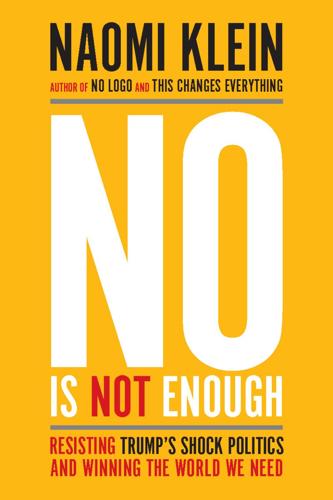
No Is Not Enough: Resisting Trump’s Shock Politics and Winning the World We Need
by
Naomi Klein
Published 12 Jun 2017
Trump had always dreamed of making his mark in Manhattan, and with the debt crisis he saw his big chance. The opening came in 1976, when the famed Commodore Hotel, a historic midtown landmark, announced that it was losing so much money that it might have to close down. The city government was panicked at the prospect of this iconic building sitting empty, broadcasting a message of urban decay and depriving the city of tax revenue. They needed a buyer, quick, and the mood was sufficiently desperate that, as one local television broadcast put it, “beggars can’t be choosers.” Enter Trump, proto–disaster capitalist. Partnering with the Hyatt Corporation, Trump had a plan to replace the Commodore’s classic brick facade with “a new skin” of reflective glass, and to reopen it as the Grand Hyatt Hotel (this was in the brief window before the future US president began insisting that all his developments bear his name).
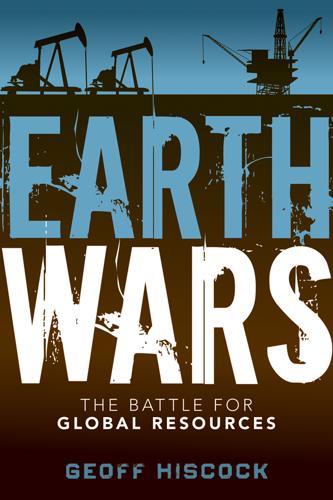
Earth Wars: The Battle for Global Resources
by
Geoff Hiscock
Published 23 Apr 2012
India will have close to 600 million people living in its cities and towns by 2030, according to a 2010 McKinsey report.13 The urban infrastructure required to cope with 68 Indian cities with populations above 1 million is of a massive scale: McKinsey estimates $1.2 trillion of capital investment is needed to ensure future urban dwellers are not condemned to the life that is the norm today for many inhabitants of India’s biggest city, Mumbai: slums, poor water and power services, bad roads, transport gridlock, and general urban decay. In July 2009, a retired Indian civil servant named Ashok Vichare became something of a media star when he took delivery in Mumbai of the first Tata Nano, an Indian-built super-cheap small car with a 624cc engine and fuel economy of just 4 litres per 100 km. But even with the frugality of the Nano and other economical cars in India, automotive demand is so strong that the country’s oil consumption is destined to rise to about 4.2 million barrels a day by 2020, up from 3.1 million in 2011.

Streetfight: Handbook for an Urban Revolution
by
Janette Sadik-Khan
Published 8 Mar 2016
Instead of designing streets from afar and focusing on moving car traffic, planners need only look to the street and follow its use to find the solutions for its problems. “There is no logic that can be superimposed on the city,” Jacobs wrote more than half a century ago; “people make it, and it is to them, not buildings, that we must fit our plans.” But instead of launching an urban renaissance, Death and Life was accompanied by years of urban decay and depopulation. White flight brought urban disinvestment as millions of city dwellers fled to suburbs, taking their taxes with them. Combined with the loss of industry and manufacturing within cities, the mass abandonment starved transportation infrastructure and slowed development within cities.

This Is for Everyone: The Captivating Memoir From the Inventor of the World Wide Web
by
Tim Berners-Lee
Published 8 Sep 2025
• The 1970s were economically challenging for the UK. The country faced high inflation, rising unemployment and economic recession. Strikes and industrial action were common, reflecting widespread discontent among workers. The country’s traditional industries, such as manufacturing and shipbuilding, were in decline, leading to job losses and urban decay in some areas. But for Jane and me, after three rich and stimulating years at Oxford, it was a time of widening horizons, of growth. And in computing, the bandwagon Jane and I were jumping on, it was an exciting time too. At Plessey, the technology was primitive by modern standards, but the work was leading edge back then.

The Rough Guide to New York City
by
Martin Dunford
Published 2 Jan 2009
| Morningside Heights 201 O Harlem and north HARL E M AND NORTH | Harlem he most famous African-American community in America (and, arguably, the birthplace of modern black culture), Harlem languished as a low-rent, high-crime neighborhood for much of the mid-twentieth century, justly earning a reputation as a place of racial tension and urban decay. Over the past couple of decades, though, things have begun to look up, and it is far less dangerous than it once was – indeed, some pockets are among the more up-and-coming areas in Manhattan. Many local observers worry, however, that the influx of investment may come at too high a price in the long run, diluting or wiping out the district’s unique Afro-American spirit and history.
…
The low prices make it worth a detour. Ricky’s 590 Broadway, between Houston and Prince sts T212/226-5590; 267 W 23rd St, between Seventh and Eighth aves T212/2060234. New York’s haven for the overdone, the brash, and the OTT (think drag-diva favorites and plenty of lurid wigs). Stocks cool brands like Urban Decay and Tony & Tina as well as a house line of products. Additional locations (sixteen of them) around the city. Sephora 555 Broadway, between Prince and Spring sts T212/625-1309; also 597 Fifth Ave, at E 48th St T 212/980-6534, Wwww.sephora .com. “Warehouse” of perfumes, make-up, and body-care products all lined up alphabetically so everything’s easy to find and you don’t have to pester any sales people.

Irrational Exuberance: With a New Preface by the Author
by
Robert J. Shiller
Published 15 Feb 2000
The confidence inspired by the Kennedy economic program led some to conclude that the country was entering a “new economy” in which “businessmen can enjoy reasonably continuous prosperity indefinitely” and that there was “more justification for confidence” in monetary policy than in times past.24 The Kennedy initiatives were expanded on by the “Great Society” program of his successor, Lyndon Johnson, beginning in 1964; Johnson’s program set as its primary goals nothing less than an end to poverty and urban decay. In the 1960s, the theory that the stock market is the “best investment” was prominent: “Investors feel that stocks are the best investment medium—as a hedge against possible inflation, as a means of participating in the future growth of business.” “Investors seem to be betting that inflation will accompany recovery—and that common stocks, even at present prices, represent the only real hedge.”25 At that time, investors believed that if inflation broke out, the stock market would go up, rather than down, as is now commonly thought, and that therefore the prospect of inflation was a reason to own stocks.
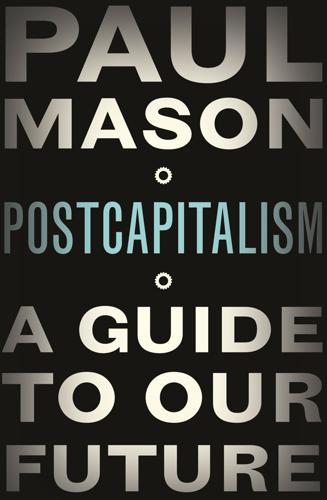
Postcapitalism: A Guide to Our Future
by
Paul Mason
Published 29 Jul 2015
There were numerous street-corner banks. It was a world of work, saving and great social solidarity. Smashing that solidarity, forcing wages down, destroying the social fabric of these towns was done – originally – to clear the ground for the free-market system. For the first decade, the result was simply crime, unemployment, urban decay and a massive deterioration in public health. But then came financialization. The urban landscape of today – outlets providing expensive money, cheap labour and free food – is the visual symbol of what neoliberalism has achieved. Stagnant wages were replaced by borrowing: our lives were financialized.

When Work Disappears: The World of the New Urban Poor
by
William Julius Wilson
Published 1 Jan 1996
.… Their bleak environment nurtures values that are often at radical odds with those of the majority—even the majority of the poor. Thus the underclass minority produces a highly disproportionate number of the nation’s juvenile delinquents, school dropouts, drug addicts and welfare mothers, and much of the adult crime, family disruption, urban decay, and demand for social expenditures. However, it was not until the early 1980s, following the publication of a series of popular books written by conservative analysts, that the arguments made in this article were widely covered in the media. In a political atmosphere created during the first term of the Reagan administration, when the dominant ideology of poverty and welfare was strongly reinforced, conservative analysts rushed to explain the apparent paradox of a sharp rise in inner-city social dislocations after years of sweeping antipoverty and antidiscrimination legislation, beginning with the Great Society programs and the civil rights legislation of the Johnson administration.

How to Murder Your Life: A Memoir
by
Cat Marnell
Published 30 Jan 2017
Weren’t those . . . the Everclear dudes? Walking right by. That’s when I realized the GERMS station was set up between the dressing rooms and the main stage . . . “You’re good to go,” the GERM told me. “Can I rest here for a little while?” I said sweetly. I was wearing Shabd’s minuscule X-Girl hot pants, Urban Decay nail polish, ice-blue Hard Candy glittery eyeliner, and a Bikini Kill “YEAH YEAH YEAH YEAH” T-shirt from Smash! in Georgetown. “I still don’t feel good.” “Sure,” the medic said. “Don’t leave this cot, okay?” I nodded. And that’s what I did: stayed put, and observed the celebrities from a respectful distance.

Democracy and Prosperity: Reinventing Capitalism Through a Turbulent Century
by
Torben Iversen
and
David Soskice
Published 5 Feb 2019
Inner-city neighborhoods decayed as plants closed, causing a significant uptick in crime, with the fortunes of surrounding towns that supplied the industrial centers declining in tandem. The term “rust belt” is a fitting metaphor for the areas most affected by deindustrialization. In response to urban decay, better-educated and higher-income families migrated to the new suburban enclaves that promised safety, better schools, and better infrastructure. Urban malaise and the associated process of suburbanization is described in a large literature in economic geography and sociology. But for all the gloomy predictions at the time, the trend was reversed (Power 2016).
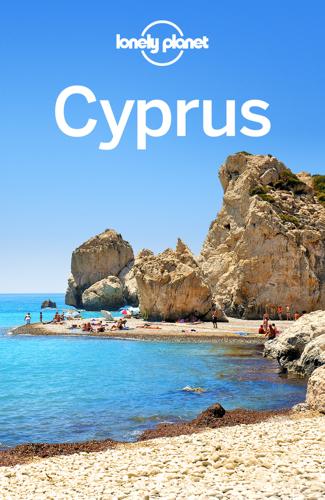
Lonely Planet Cyprus
by
Lonely Planet
,
Jessica Lee
,
Joe Bindloss
and
Josephine Quintero
Published 1 Feb 2018
Its main suppliers – the grocers and butchers of Ayios Antonios Municipal Market – are just a stone's throw away. The small menu features piadina (Italian pizza-style flatbread), steaks, fish and meat dishes (the oven-roasted duck is delicious), as well as quirky artisan burgers. NICOSIA MASTER PLAN In an effort to preserve the historic fabric of the Old City, combat the urban decay creeping into neighbourhoods within the Venetian walls and foster trust between the capital's two divided communities, the Nicosia Master Plan was founded in 1979. The project was initially conceived to help solve the Old City's serious infrastructure problems, which had been further magnified by division.

Culture and Prosperity: The Truth About Markets - Why Some Nations Are Rich but Most Remain Poor
by
John Kay
Published 24 May 2004
As Moses built, traffic grew until his highways were as congested as were the roads before. The Cross Bronx Expressway turned once thriving communities into areas of dereliction. When Governor Nelson Rockefeller finally maneuvered him from office in 1968when Moses was almost eighty years old-the city he had shaped so dramatically was in a spiral of decline, stricken by urban decay and financial crisis. Planning in British Electricity ••••••••••••••••••••••••••••••••••••• Absolutism of authority is part of the problem. In Soviet Russia and Communist China, as at Wang Laboratories and the Ford Motor Company, decision making was personalized and undemocratic. In New York, Robert Moses, an unelected official, gathered autocratic power in an environment of ostensible democracy.
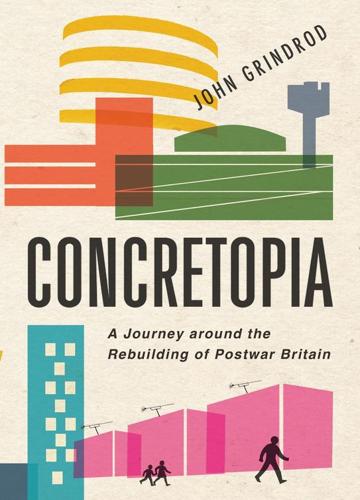
Concretopia: A Journey Around the Rebuilding of Postwar Britain
by
John Grindrod
Published 2 Nov 2013
Instead of the tightly packed back-to-back slum housing, they recommended a radical European solution: ‘a proportion of lofty blocks of flats, placed well enough apart for groups of trees, with terraced houses disposed in regular but not monotonous form, the whole interspersed with open space.’33 In 1947, this district became the Stepney-Poplar comprehensive development area. The CDAs were a new government initiative to speed up the planning and rebuilding of large areas of urban decay. A bright young team were brought in to inject radical new ideas: Arthur Ling, senior LCC planning officer and fervent communist split the vast East End district into eleven neighbourhoods, along the lines of the new town ideal; Harlow mastermind Frederick Gibberd joined him in June 1949 to develop what would become the centre of the first neighbourhood, Chrisp Street Market, in the newly named Lansbury estate; and sociologist Margaret Willis was hired to canvass the existing residents.
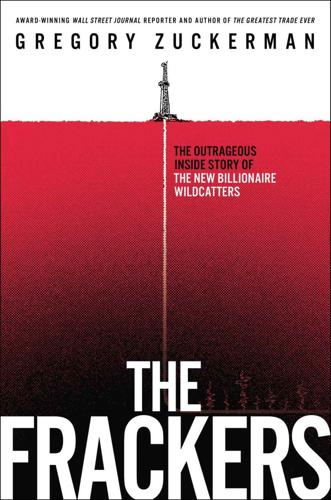
The Frackers: The Outrageous Inside Story of the New Billionaire Wildcatters
by
Gregory Zuckerman
Published 5 Nov 2013
By the 1970s, Mitchell was reading the work of Dennis Meadows, a scientist who recommended ways to slow global growth to reduce the impact a growing population was having on finite resources. He also became an advocate for sustainable energy technologies and food sources. Focused on preventing urban decay from taking place in Houston and elsewhere, Mitchell visited troubled neighborhoods around the country, such as Brooklyn’s Bedford-Stuyvesant and the Watts area in Los Angeles. “All of our cities are in trouble,” he said in an interview at the time. “The concentration of the disadvantaged and the flight to the suburbs of the middle-class whites—that’s destroying all our cities.”

Smart Cities: Big Data, Civic Hackers, and the Quest for a New Utopia
by
Anthony M. Townsend
Published 29 Sep 2013
A massive mash-up, it would synthesize “all the indicators that we have block by block and infer the probability that an undesirable outcome will result.” While Chicago’s effort looked at real data, not some abstract model, there was an eerie similarity to the cybernetic missteps of the 1960s that tried to compute urban decay. But Tolva wasn’t entirely seduced by data. He understood that it is nothing more than a diagnostic tool: “A single data point that does not tell you that a house is going to fall into blight but [the index could signal] that there is a higher than normal probability that it will be in disrepair.”33 The data could then be used as an input when allocating revitalization funds or directing social workers to trouble spots.
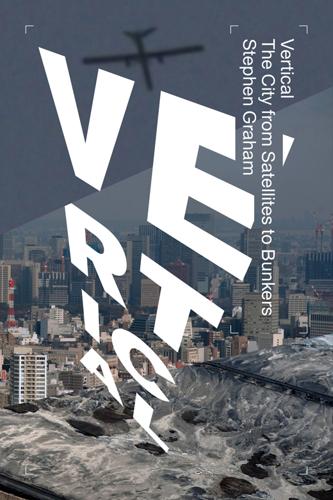
Vertical: The City From Satellites to Bunkers
by
Stephen Graham
Published 8 Nov 2016
Louis, Missouri on July 15, 1972 at 3:32 pm (or thereabouts) when the infamous Pruitt-Igoe scheme, or rather several of its slab blocks, were given the final coup de grâce by dynamite.’25 Built in the 1950s, the Pruitt-Igoe project became in the 1960s and 1970s a symbol of the racialised decay of inner urban cores and white flight as the middle classes rushed to the suburbs. Redlining, deindustrialisation and the growing emergence of racialised ghettos in Pruitt-Igoe and similar projects allowed mainstream media to demonise such places and their inhabitants. Pruitt-Igoe thus emerged as a symbol of urban decay, collapse and hopelessness. Its spectacular erasure was widely used as shorthand for a period in the US where ‘those who lived in cities no longer cared for them, and those who lived elsewhere feared and detested them.’26 The fact that communal housing was widely deemed to chime with socialist thinking didn’t help.
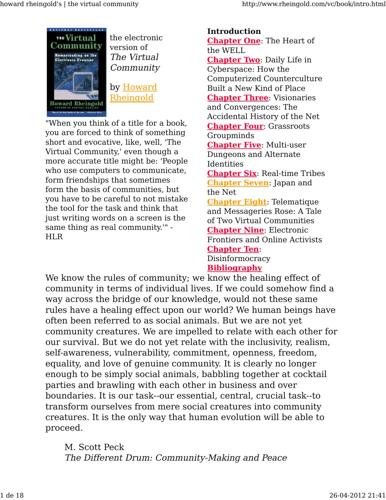
Howard Rheingold
by
The Virtual Community Homesteading on the Electronic Frontier-Perseus Books (1993)
Published 26 Apr 2012
Perhaps the public conviviality that Paris is famous for is the real thing that others seek, and for which they find only a substitute, a simulacrum, in virtual communities. The question naturally arises, as Popravka pointed out, whether the communion kind of virtual community has the same potential in a place where people commune in the still-vital heart of their city, or whether the suburbanized, urban-decayed, paved, and malled environment of modern America is a necessary condition for the proliferation of virtual communities. Certainly, that is the implication of the theories of the French philosopher and social critic Baudrillard, who sees electronic communication as part of the whole web of hyperrealistic illusion we've turned to, in our technologically stimulated flight from the breakdown of human communities.
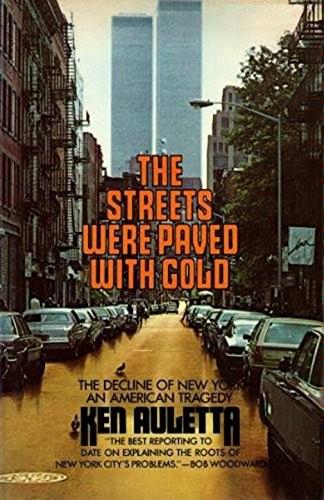
The Streets Were Paved With Gold
by
Ken Auletta
Published 14 Jul 1980
And even these did not represent a failure of ideology or people, since, according to this view, Rockefeller and municipal politicians were just being selfish. The main culprits were Washington and the banks. A similar approach is taken by Richard S. Morris, an otherwise intelligent political activist and consultant to liberal Democrats. The “real villains of the urban crisis,” he writes in Bum Rap on American Cities: The Real Causes of Urban Decay, are not “liberals” but the robber-baron federal government and greedy bankers. He adds, “Liberals are, indeed, taking a bum rap” because New York’s crisis is “not the result of any error in direction or approach.” Former Lindsay administration officials blame “the system” or the “ungovernability of cities”—when they’re not blaming Washington.

Retrofitting Suburbia, Updated Edition: Urban Design Solutions for Redesigning Suburbs
by
Ellen Dunham-Jones
and
June Williamson
Published 23 Mar 2011
Jackson, Crabgrass Frontier: The Suburbanization of the United States (New York: Oxford University Press, 1985), 6. 2 Becky Nicolaides, “How Hell Moved from the City to the Suburbs” in The New Suburban History, ed. Kevin M. Kruse and Thomas J. Sugrue (Chicago: University of Chicago Press, 2006), 80–98. 3 Robert Fishman, Bourgeois Utopias (New York: Basic Books, 1987), 206. 4 Historian Paul Mattingly seconded Fishman’s point: “Suburbia has become more than a convenient foil to explain urban decay and a culture of narcissism; it has become a cultural canon that often resists contextual data supporting a different perspective and a different landscape.” Paul H. Mattingly, “The Suburban Canon over Time,” in Suburban Discipline, ed. Peter Lang and Tam Miller (New York: Princeton Architectural Press, 1997), 38–51. 5 Sam Bass Warner Jr., Streetcar Suburbs: The Process of Growth in Boston (1870–1900) (Cambridge, MA: Harvard University Press, 1962, 1978). 6 Barry Checkoway, “Large Builders, Federal Housing Programmes, and Postwar Suburbanization,” International Journal of Urban and Regional Research 4:1 (March 1980): 21–44.

The Future Won't Be Long
by
Jarett Kobek
Published 15 Aug 2017
The second bedroom, farther back, was shared by two girls from South Korea, Sun-Yoon and Jae-Hwa. They’d both adopted American names. Jane and Sally, respectively. It fell on Jane to try and keep the suite clean, but some places are too old. Even the carpeting rotted with mold. What could one girl do against decades of urban decay? —Welcome to 6B, said Adeline. We went into her tiny room. The floor was bare linoleum. Adeline’d covered her walls with images and photos. Famous people, fashion photographs, cheap reproductions. A poster of Max Ernst’s The Robing of the Bride. I didn’t recognize it. Another announcing performances by Siouxsie and the Banshees at the Hollywood Palladium on June 6 and 7.
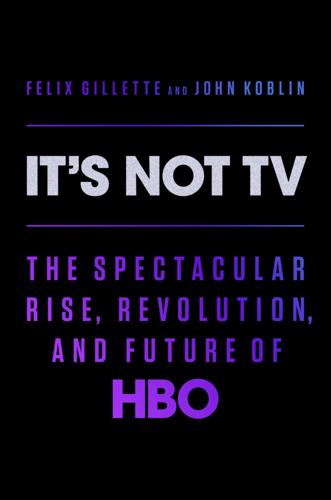
It's Not TV: The Spectacular Rise, Revolution, and Future of HBO
by
Felix Gillette
and
John Koblin
Published 1 Nov 2022
At the time, Simon was on the verge of publishing his second nonfiction book, The Corner: A Year in the Life of an Inner-City Neighborhood, which chronicled the impact of the drug trade and the city’s ineffective war on drugs on one block in West Baltimore. Simon reported and wrote the book with Ed Burns, a former city homicide officer. Having watched up close as NBC turned his first book into a prime-time drama, Simon initially believed there was no way anybody in TV would touch The Corner. He suspected its depiction of drug addiction and urban decay would be both too cerebral and too grim for broadcast television. But seeing what Fontana was doing with Oz got Simon thinking. Maybe HBO would be interested? “Oz was a revelation to me,” says Simon. Simon reached out to Fontana to see if he and Barry Levinson might want to team up again to work on The Corner.
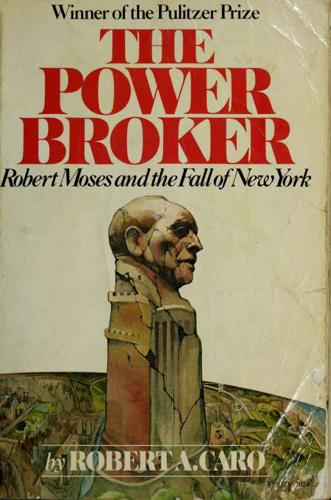
The power broker : Robert Moses and the fall of New York
by
Caro, Robert A
Published 14 Apr 1975
Crossing the ten-lane truck road, wider than a football field, was even more of a problem because the traffic lights never seemed to allow enough time for anyone not in the best of health to get across. Sunset Park families began to do their shopping in stores that were not on Third Avenue. Once the avenue had been a place for people; Robert Moses had made it a place for cars. And as the avenue's roadway became more crowded, its sidewalks began to empty. The vicious gyre of urban decay began—and widened. Because there weren't as many people shopping on Third Avenue, there weren't enough to support the avenue's stores and restaurants—not even the half of the stores and restaurants that remained after the widening. One by one they began to close. Because there weren't as many stores and restaurants, people began doing their shopping and dining out elsewhere, and then there were even fewer people on Third Avenue.
…
In 1951, with the nonwhite population of East Tremont already substantial and clearly going to increase further, the Association of Young Men's and Young Women's Hebrew Associations of New York—considering building a new Y to replace the Clinton Avenue building—had decided to determine whether or not the investment would be worthwhile, and had conducted the most detailed survey of East Tremont residents ever made. Its conclusions were clear. Negroes might come. The Jews would stay. For more than twenty years, the pressure of urban decay and blight had been pressing on the neighborhood, but for twenty years, the neighborhood had held. Leave it alone, and it would continue to hold. By 1952 there were 775,516 Negroes and nonwhite Spanish-speaking people—a full 10 percent of New York's residents—in the city. And, as the Irish had done a century before and the Italians and Eastern European Jews half a century before, these immigrants from the South and from the Caribbean were continuing to pour into the city by the thousands and tens of thousands.
…
Hoover, Herbert, 182, 281, 293, 345, 380, 409 Hopkins, Harry, 363, 453, 456, 516 Hopper, Hedda, 1034 Horace Harding Expressway, 6yh, Horizon, 1028 hospitals and health clinics, 261, 265, 274, 324, 328, 491, 614, 640, 642-3, 644, 757, 759, 772, 795 housing: general information: condemnations, 6, 6n, 777, 779, 891, 962, 967, 973, 980, 1013-14; funds for, city, 768; funds for, federal, 610, 611, 704, 717 (see also housing: Title /); funds for, state, 610, 611, 717, 758, 759, 768, 802, 804, 805; high-density, 898, 941-2, 945-6, 958; La Guardia and, 610-13; liberals and, 758, 762; low-income, 6-7, 20, 328, 449, 610, 655, 700, 704, 717, 767, 796-7, 805, 830, 855-6, 862, 882, 962-3, 969, 972-3, 974; luxury, 6, 20, 1014; middle-income, 802, 890-1, 892-3; RM as Emergency Housing Chairman, 764, 765-6, 768; RM's control, 7, 700-1, 706-7, 765-6, 796-7, 777, 802, 804-5, 830, 891, 1060; RM's philosophy, 610, 765, 767, 777, 805, 882, 1060-1, 1151, 1158; RM's plans for, 1151-2, 1153-4; RM's power grab, 610-13, 777; projects, 7, 345, 768, 796-7, 802, 862, 882, 891, 904, 962-3, 969, 972-3, 974, 1018; public authorities and, 627; shortage, 766, 768, 786, 801, 848, 855, 860, 862, 880, 1152; social philosophy of, 777, 1151; state, 261, 408; for UN, 772, 774; urban decay, and RM's public works, 520-5, 749, 860-1, 880-3, 888-90, 893, 963-6, 969-76, 1007; welfare, 893; see also N.Y.C. Housing Authority Title I, 12, 1060-1; corruption and honest graft in, 718, 726-7, 965, 979-82, 1006-13, 1014, 1016-18, 1040-54 passim, 1062; Democratic Party and, 965, 979-82, 1006-13, 1017-18, 1040, 1045-8, 1050; housing, 6, 704, 777, 805, 830, 890-1, 961, 962, 980-1, 1014-15, I 018 , 1024, 1060-1; RM's control of, as Slum Clearance Chairman, 12, 707, 718, 726-7, 74i, 752, 777-8, 805, 830, 872, 961, 962-3, 979-8o, 982-3, 988, 1000, 1006-25, 1040-63 passim, 1091; RM's falsifying facts on, 963, 967, 968-9, 972-3, 976, 977, 979; RM's records, 967, 977, 1008, 1040-5; neighborhood decay from, 963-6, 969-76, 1007; N.Y.C.
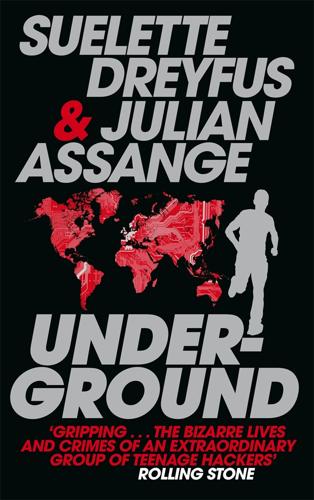
Underground
by
Suelette Dreyfus
Published 1 Jan 2011
In the early 1840s, Friedrich Engels had worked in his father’s cotton-milling factory in the area, and the suffering he saw in the region influenced his most famous work, The Communist Manifesto, published in 1848. Manchester wore the personality of a working-class town, a place where people often disliked the establishment and distrusted authority figures. The 1970s and 1980s had not been kind to most of Greater Manchester, with unemployment and urban decay disfiguring the once-proud textile hub. But this decay only appeared to strengthen an underlying resolve among many from the working classes to challenge the symbols of power. Pad didn’t live in a public housing high-rise. He lived in a suburban middle-class area, in an old, working-class town removed from the dismal inner-city.

Cities Under Siege: The New Military Urbanism
by
Stephen Graham
Published 30 Oct 2009
He invokes what geographers call a process of rescaling – a reorientation away from globe-spanning revolutions in high-tech warfare, and towards a dominant concern with the spaces of streets, favelas, medinas and neighbourhoods. This parallels the increasing preoccupation of military and security forces with the microgeographies of domestic cities. ‘Traditionally, problems of urban decay and associated issues, such as crime’, writes Norton, ‘have been seen as domestic issues best dealt with by internal security or police forces. That will no longer be an option.’82 The Bush administration’s language of moral absolutism was, in particular, deeply Orientalist. It worked by separating ‘the civilized world’ – the ‘homeland’ cities which must be ‘defended’ – from the ‘dark forces’, the ‘axis of evil’, and the ‘terrorist nests’ alleged to dwell in, to be situated in, and to define Arab cities, which allegedly sustain the ‘evil-doers’ who threaten the health, prosperity, and democracy of the whole ‘free’ world.83 The result of such imaginative geographies has been the a-historical and essentialized projection of Arab urban civilization.
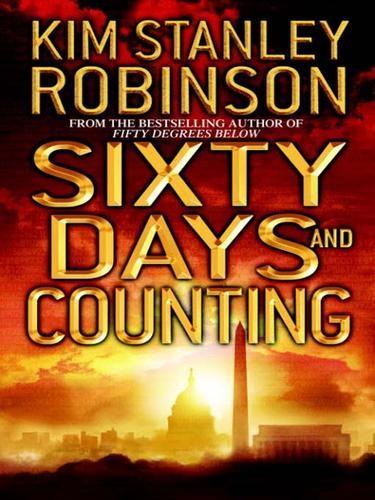
Sixty Days and Counting
by
Kim Stanley Robinson
Published 27 Feb 2007
Or whether trained labor will be the real shortage.” “I guess we’ll find out.” “That’s a good thought.” And young Henry grinned. Evening in the park, and Frank buzzed Spencer and joined him and Robin and Robert at a new fregan house. East, into a neighborhood he had never been in before, a kind of border between gentrification and urban decay, in which burned or boarded-up buildings stood mutely between renovated towers guarded by private security people. An awkward mix it seemed, and yet once inside the boarded-up shell of a brownstone, it proved to be as sheltered from the public life of the city as any other place. Home was where the food was.

Market Forces
by
Richard K. Morgan
Published 4 Mar 2004
Erik looked at her in silence for a while. Then he went to the window and tugged back one of the ragged curtains. Outside, something had been set on fire and it painted leaping shadows on the ceiling above where he stood. Shouts came through the thin glass pane. ‘Yes,’ he said softly. ‘I know what you mean. You mean this. Urban decay, as only the British know how to do it. And here I am, fifty-seven years old and stuck in the middle of it.’ She avoided his eyes. ‘It’s just so civilised back there, Dad. There’s nobody sleeping on the streets—‘ ‘Just as well, they’d freeze to death.’ She ignored him. ‘—nobody dying because they can’t afford medical attention, no old people too poor to afford heating and too scared to go out after dark.

Discover Caribbean Islands
by
Lonely Planet
Architect Jacob Gelt Dekker took a run-down neighborhood in Otrobanda and created a village-like hotel complex. Eating & Drinking Mundo Bizzarro Caribbean $$ map Google map (9-461-6767; 12 Nieuwestraat, Pietermaai; mains US$8-20; 11am-late) The anchor of Pietermaai, the ground floor opens to the street. Inside it’s got a faux look of urban decay which is countered by the fine food. Upstairs there’s a bar with fab mojitos and live music Wednesday to Saturday. Plein Cafe Cafe $$ map Google map (Wilhelminaplein 19-23, Punda; meals from NAf10; 7:30am-11pm; ) This Dutch cafe and its neighboring twin are so authentic that if it were –1°C (30°F) and raining, you’d think you were in Amsterdam.
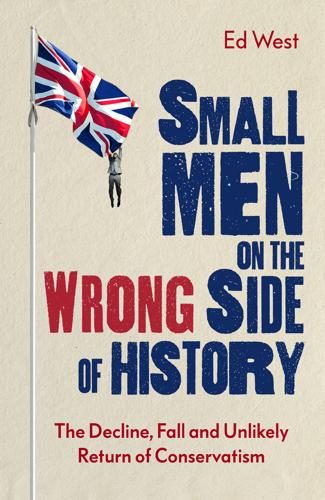
Small Men on the Wrong Side of History: The Decline, Fall and Unlikely Return of Conservatism
by
Ed West
Published 19 Mar 2020
Besides which communism was hardly very sexy by this point, represented not by Che but the hard-faced Politburo geriatrics who would turn out for their annual May Day events looking like living corpses, old, tired men addicted to vodka and surviving on dialysis machines. How could anyone say these mirthless half-dead bureaucrats with their failed ideas were the future? In contrast the United States that decade seemed as magical as those West Berlin toyshops, filled with colour and sound, hairspray and shoulder pads, dynamic films and music. Even its urban decay and squalor was sort of glamorous and exciting. The country seemed to have regained its confidence in this age of cheesy action films with Rocky, Rambo and John McClane beating up various Ruskis, Germans and Arab pantomime villains, not to mention Frank Drebin in The Naked Gun fighting the Ayatollah and Gaddafi.

The Rise and Fall of the Neoliberal Order: America and the World in the Free Market Era
by
Gary Gerstle
Published 14 Oct 2022
“The bleak environment” of concentrated poverty in which they lived “nurtured values” in them that were “often at odds with those of the majority—even the majority of the poor.” This underclass was producing “a highly disproportionate number of the nation’s juvenile delinquents, school dropouts, drug addicts and welfare mothers, and much of the adult crime, family disruption, urban decay and demand for social expenditures.”50 Technically the term “underclass” could be used to describe the poor of any color. Ken Auletta tried strenuously in his bestselling 1982 book, The Underclass, to deploy it in racially neutral ways. But its usage in the United States in the 1980s was coded black.

Lonely Planet Southern Italy
by
Lonely Planet
In the old town, head up the winding, charmingly dilapidated Corso Telesio, which has a raw Neapolitan feel to it and is lined with ancient tenements and antiquated shopfronts, including shops housing a musical instrument maker, a Dickensian shoe mender and shops selling traditional crafts. Enlivened by an ever-changing gallery of street art, the side alleys are a study in urban decay. At the top is Cosenza’s 12th-century cathedral (%0984 7 78 64; www.cattedraledicosenza.it; Piazza del Duomo 1; h8am-noon & 3-7.30pm). Head further along the corso to Piazza XV Marzo, an appealing square fronted by the Palazzo del Governo and the handsome neoclassical Teatro Rendano (%0984 81 32 27; Piazza XV Marzo; tickets from €5).
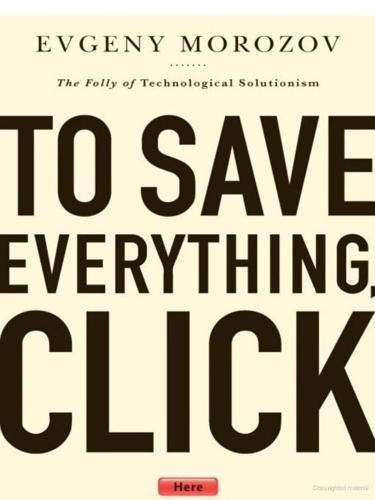
To Save Everything, Click Here: The Folly of Technological Solutionism
by
Evgeny Morozov
Published 15 Nov 2013
But if the goal is to come up with better, more sustainable, and ecologically friendlier ways of parking, and even of managing transportation as a whole, then the Santa Monica scheme fails, for it optimizes the efficiency of only the local—not the global—system. That is, if it gives us citizens who don’t normally reflect on their parking and driving habits, then the scheme might still be considered a failure, even if it leads to more efficient billing of parked cars. Such unreflective attitudes toward transportation have given us both urban decay and climate change. We can postpone thinking about seemingly trivial everyday issues for only so long—eventually, they will come back to haunt us. Victorian Trains and Montana Huts In a way, various smart systems like the one in Santa Monica suffer from the same problem as self-tracking: if quantification gives us an opportunity to save three gallons of water without questioning how this water gets into our bathrooms to begin with, then perhaps the savings are not as significant as we believe and maybe they even detract from our seeking more innovative ways of reforming the water system.
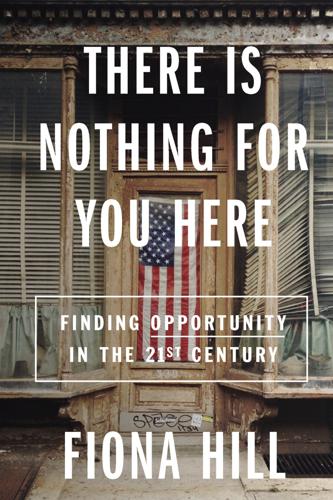
There Is Nothing for You Here: Finding Opportunity in the Twenty-First Century
by
Fiona Hill
Published 4 Oct 2021
The coronavirus’s apparent jump from an animal host to humans somewhere around Wuhan in China was perhaps just one consequence of environmental degradation as mankind continued to encroach on global ecosystems. Climate change further raised the specter of a permanently shifting Rust Belt across America—a swath of economic blight and urban decay that would no longer be confined to the country’s former industrial regions. As some places in the United States became more risky or difficult to live in because of rising sea levels and more frequent catastrophic “weather events,” people would have to move. This would compound the dislocation from deindustrialization and economic downturns since the 1980s and put new demographic pressure on regions and resources outside the climate danger zones.
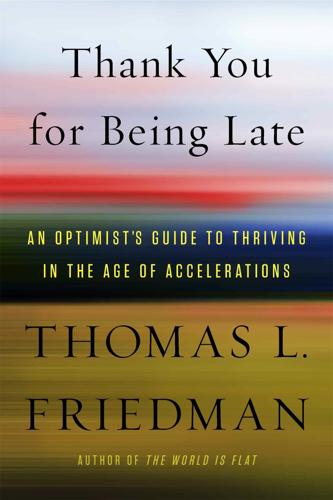
Thank You for Being Late: An Optimist's Guide to Thriving in the Age of Accelerations
by
Thomas L. Friedman
Published 22 Nov 2016
And that nationalizing impulse intensified after World War II, he noted, “reaching its peak in LBJ’s Great Society. This period of expansive liberalism saw the federal government assume responsibility for problems that had previously been left mainly to states and local authorities: racial injustice, poverty, illness, gender inequality, urban decay, educational inequity and pollution.” Geopolitics also pushed things up to Washington, D.C., which had to finance and sustain a global Cold War competition with the Soviet Union. Plus, you had the need for real expertise from the federal government for solving new, complex industrial-age problems.
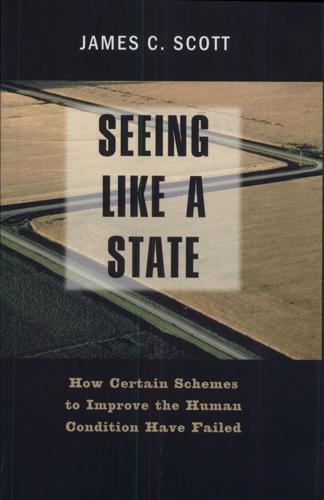
Seeing Like a State: How Certain Schemes to Improve the Human Condition Have Failed
by
James C. Scott
Published 8 Feb 1999
In her telling critique of planning, Jacobs is frequently tempted to naturalize the unplanned city rather as Hayek naturalizes the market. 107. Ibid., p. 138. 108. Some of Jacobs's insights appear to be behind the early stages of recuperation in a few blighted sections of New York City's South Bronx, once a synonym for the worst in urban decay. A combination of refurbishing existing buildings and apartments, promoting mixed-use development and urban homesteading, making small loans more readily available, and keeping to a modest scale appears to have facilitated the creation of viable neighborhoods. 109. Quoted in ibid., pp. 336-37.
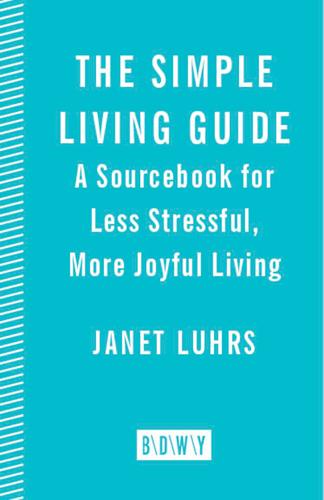
The Simple Living Guide
by
Janet Luhrs
Published 1 Apr 2014
After World War II they were called victory gardens, and again they provided a food source during a time of shortage. Today community gardens are popular because of concern for the environment and concerns about our food. The greatest impact, however, on the growth of modern community gardens has been from people who want to halt the rise of urban decay. A vacant lot is a haven for crime, graffiti, garbage, and disease. They’re making people every day, but they ain’t makin’ any more dirt. —WILL ROGERS Rose Murphy writes in Green-Up Times, a publication of the New York Botanical Garden, “It takes serious commitment and endless hours of hard work just to get the garbage off the lot.
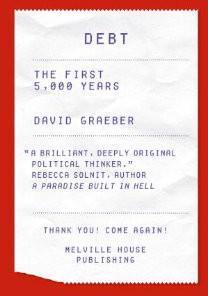
Debt: The First 5,000 Years
by
David Graeber
Published 1 Jan 2010
Sharma, J. P. 1968. Republics in Ancient India: c 1500 – c. 500 BC. Leiden: E. J. Brill Sharma, Ram Sharan. 1958. Sudras in Ancient India. Delhi: Mohtial Banarsidas. _____. 1965. “Usury in Medieval India (A.D. 400-1200).” Comparative Studies in Society and History 8 (1): 56-77. _____. 1987. Urban Decay in India c. 300- c.1000. Delhi: Munshiram Manoharlal. _____. 2001. Early medieval Indian society: a study in feudalisation. Hyderbad: Orient Longman. Shell, Marc. 1978. The Economy of Literature. Baltimore: Johns Hopkins University Press. _____. 1992. Money, Language, and Thought. Baltimore: Johns Hopkins University Press.
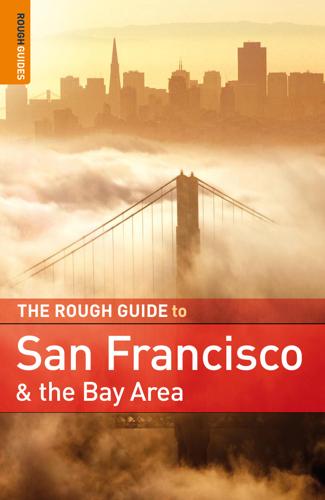
Rough Guide to San Francisco and the Bay Area
by
Nick Edwards
and
Mark Ellwood
Published 2 Jan 2009
Ravers, Deadheads, and other Bay Area riffraff wander in and out of the plot. | Books 411 San Francisco on film S an Francisco is a favorite with Californian filmmakers, the city’s staggering range of settings and chameleon-like geography making an often economical choice for the director who needs sunny beaches, swirling fogs, urban decay, and pastoral elegance all at once. Thrillers, in particular, seem to get good mileage out of the city; Hitchcock loved it, while the ridiculous gradients are almost ideally suited to the car chases that Hollywood loves so much. Below is a list of the obvious and not-so-obvious films made about or in California’s most beautiful city.

This Sceptred Isle
by
Christopher Lee
Published 19 Jan 2012
In this period, the middle of the fifth century, there were great forests almost everywhere. The Weald at that time ran from Kent to Hampshire: 120 miles long and 30 miles deep. Where there wasn’t forest, there were often marshlands. There were roads, almost 5,000 miles of them, left by the Romans yet the towns were crumbling. It would be called urban decay today and it had started before the Romans left. The Britons, and the Saxon invaders, were rarely stone masons; they left no record of knowing much about repairing the buildings and cared even less. The great Saxon churches, many surviving today, came much later. If we have doubts about Gildas, we have fewer doubts about the importance of the clues to this period found in The Anglo-Saxon Chronicle and the Historia Ecclesiastica Gentis Anglorum, The Ecclesiastical History of the English People by the Venerable Bede – the first British historian.

Lonely Planet Scotland
by
Lonely Planet
In the late 19th and early 20th centuries Dundee was one of the richest cities in the country – there were more millionaires per head of population here than anywhere else in Britain – but the textile and engineering industries declined in the second half of the 20th century, leading to high unemployment and urban decay. In the 1960s and '70s Dundee's cityscape was scarred by ugly blocks of flats, office buildings and shopping centres linked by unsightly concrete walkways and most visitors passed it by. Since the mid-1990s, however, Dundee has reinvented itself as a tourist destination, and a centre for banking, insurance and high-tech industries, while its waterfront is undergoing a major redevelopment.
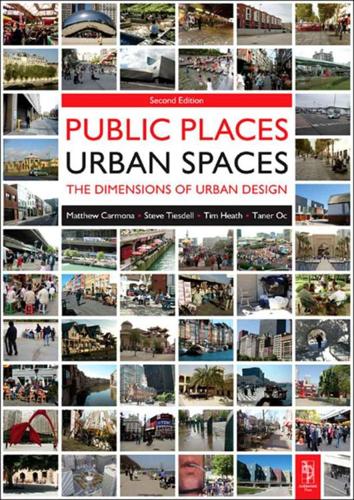
Public Places, Urban Spaces: The Dimensions of Urban Design
by
Matthew Carmona
,
Tim Heath
,
Steve Tiesdell
and
Taner Oc
Published 15 Feb 2010
The main part of this chapter thus sets out and discusses some of the key elements. BOX 11.1 Birmingham, UK: Re-inventing Through Urban Design Victoria Square, Birmingham) Birmingham has long been the UK’s exemplary urban design case study. Post-war re-building of the city centre in the 1950s and 1960s made it Britain’s first ‘car city’. Urban decay in the 1970s and 1980s, exacerbated by the strangulation of the city centre inside its ring roads, led to the first serious attempt in the UK to consider a city from an urban design perspective. The urban design strategy that emerged in the early 1990s prioritised making connections across the city (for pedestrians), understanding how people used and read the city from a ground-level perspective, exploiting the city’s heritage and distinctive qualities, and, once again, creating a city for people rather than cars.

Lonely Planet Scotland
by
Lonely Planet
In the late 19th and early 20th centuries Dundee was one of the richest cities in the country – there were more millionaires per head of population here than anywhere else in Britain – but the textile and engineering industries declined in the second half of the 20th century, leading to high unemployment and urban decay. In the 1960s and ’70s Dundee’s cityscape was scarred by ugly blocks of flats, office buildings and shopping centres linked by unsightly concrete walkways; most visitors passed it by. Since the mid-1990s, however, Dundee has reinvented itself as a tourist destination, and a centre for banking, insurance and high-tech industries, while its waterfront has undergone a major redevelopment.

The Rough Guide to New York City
by
Rough Guides
Published 21 May 2018
Mon & Sun noon–6pm, Tues–Sat 11am–7pm. Ricky’s 590 Broadway, between Houston and Prince sts 212 226 5552, rickysnyc.com; subway N, R to Prince St; map. Plus several other locations. New York’s haven for the overdone, the brash and the OTT (think drag favourites and plenty of lurid wigs). Stocks cool brands like Urban Decay and Tony & Tina as well as a house line of products. Mon–Sat 10am–9pm, Sun 11am–8pm. Sephora 555 Broadway, between Prince and Spring sts 212 625 1309, sephora.com; subway N, R to Prince St, #6 to Spring St; map. Plus several locations downtown. A cosmetics wonderland where the perfumes, make-up and body-care products are systematically organized and everything is at the ready for sampling and dabbing on your friends.

Lonely Planet Washington, Oregon & the Pacific Northwest
by
Lonely Planet
Olympic Sculpture ParkPARK (map Google map; %206-654-3100; 2901 Western Ave, Belltown; hsunrise-sunset; g33) F This ingenuous feat of urban planning is an official offshoot of the Seattle Art Museum and bears the same strong eye toward design and curation. There are over 20 sculptures to stop at and admire in this green space that sprawls out over reclaimed urban decay. You can also enjoy them in passing while traversing the park’s winding trails. Views of the Puget Sound and Olympic Peninsula in the background will delight anyone looking for some great pictures for social media. 1Capitol Hill & First Hill Frye Art MuseumMUSEUM (map Google map; %206-622-9250; www.fryemuseum.org; 704 Terry Ave, First Hill; h11am-5pm Tue, Wed & Fri-Sun, to 7pm Thu; p; jFirst Hill Streetcar) F This small museum on First Hill preserves the collection of Charles and Emma Frye.
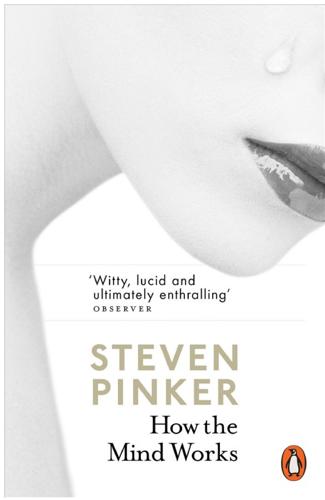
How the Mind Works
by
Steven Pinker
Published 1 Jan 1997
The other challenge comes from the fans of a new field called the theory of complexity. The theory looks for mathematical principles of order underlying many complex systems: galaxies, crystals, weather systems, cells, organisms, brains, ecosystems, societies, and so on. Dozens of new books have applied these ideas to topics such as AIDS, urban decay, the Bosnian war, and, of course, the stock market. Stuart Kauffman, one of the movement’s leaders, suggested that feats like self-organization, order, stability, and coherence may be an “innate property of some complex systems.” Evolution, he suggests, may be a “marriage of selection and self-organization.”

Scotland Travel Guide
by
Lonely Planet
In the late 19th and early 20th centuries Dundee was one of the richest cities in the country – there were more millionaires per head of population here than anywhere else in Britain – but the textile and engineering industries declined in the second half of the 20th century, leading to high unemployment and urban decay. In the 1960s and ’70s Dundee’s cityscape was scarred by ugly blocks of flats, office buildings and shopping centres linked by unsightly concrete walkways – the view as you approach across the Tay Road Bridge does not look promising – and most visitors passed it by. Since the mid-1990s, however, Dundee has reinvented itself as a tourist destination, and a centre for banking, insurance and new industries, while its waterfront is currently undergoing a major redevelopment.
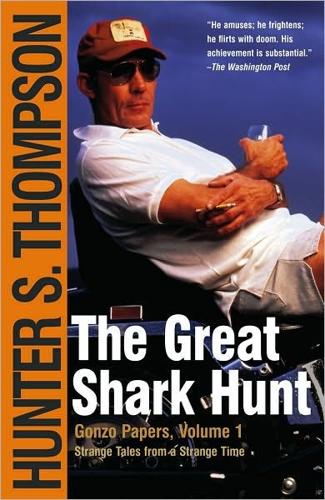
The Great Shark Hunt: Strange Tales From a Strange Time
by
Hunter S. Thompson
Published 6 Nov 2003
In order to be a "realtor" in Louisville, a real-estate agent has to be a member of "the Board," which does not accept Negroes. Warders is a member of the Washington-based National Institute of Real Estate Brokers, which has about as much influence here as the French Foreign Legion. Louisville, like other cities faced with urban decay, has turned to the building of midtown apartments as a means of luring suburbanites back to the city center. In the newest and biggest of these, called "The 800," Warders tried to place a Negro client. The reaction was a good indicator of the problems facing Negroes after they break the barrier of outright racism.

Palo Alto: A History of California, Capitalism, and the World
by
Malcolm Harris
Published 14 Feb 2023
iii Dalal was one of the engineering students who oversupplied India in the period, graduating from the Soviet-supported Indian Institute of Technology Bombay in 1972 before pursuing his electrical engineering doctorate (and resulting fortune) in Palo Alto. iv The couple divorced, and Lerner went on to found the iconically mordant Gen X makeup brand Urban Decay. v In her recent book, scholar Julie A. Turnock questions the Silicon Graphics PR claims regarding use of the company’s workstations on films such as Jurassic Park and Death Becomes Her, claims which have become accepted as fact. More likely, she argues, persuasively, those effects were accomplished on regular Macs.
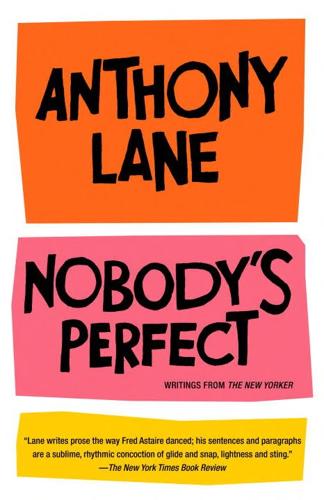
Nobody's Perfect: Writings From the New Yorker
by
Anthony Lane
Published 26 Aug 2002
How much more interesting if Father Matthew had been the one with the guilty secret, with a little closed door at the back of his open mind, and if Greg had fallen in love with the housekeeper, or else—and this would have been the sharpest shock of all—if he really had been celibate. You might think that Priest is already brimming over with issues, but there’s more: on top of urban decay and gay clergy we get child abuse. (Don’t expect a repeat of The Boys of St. Vincent, though; these priests aren’t that bad.) A young girl comes for confession and tells Father Greg that she is being raped regularly, and secretly, by her father. Our hero is thus imprisoned in the oldest and clammiest of priestly dilemmas, the one that got Montgomery Clift in such a pickle in I Confess: How can you see justice done while preserving the sanctity and confidentiality of the confessional?

The Rise and Fall of American Growth: The U.S. Standard of Living Since the Civil War (The Princeton Economic History of the Western World)
by
Robert J. Gordon
Published 12 Jan 2016
Second, air conditioning made possible a massive move of American manufacturing to the southern states and indirectly sped the process by which inefficient old multistory factories in the old northern industrial cities were replaced by new greenfield single-story structures in the south. We return in the next section to the unfortunate consequence of urban decay in the northern industrial cities hardest hit by the exodus of manufacturing jobs—and with them a substantial proportion of the early postwar population. Room air conditioners are simple single-purpose devices designed to cool air and recirculate it. There are fewer dimensions of quality change, because there is no analogy to the multiple aspects of refrigerator quality.

USA Travel Guide
by
Lonely, Planet
OHIO FACTS » Nickname Buckeye State » Population 11.5 million » Area 44,825 sq miles » Capital city Columbus (population 733,200) » Other cities Cleveland (population 444,300), Cincinnati (population 332,250) » Sales tax 5.5% » Birthplace of inventor Thomas Edison (1847–1931), author Toni Morrison (b 1931), entrepreneur Ted Turner (b 1938), filmmaker Steven Spielberg (b 1947) » Home of sows, roller coasters, aviation pioneers Wright Brothers » Politics swing state » Famous for first airplane, first pro baseball team, birthplace of seven US presidents » State rock song ‘Hang On Sloopy’ » Driving distances Cleveland to Columbus 142 miles, Columbus to Cincinnati 108 miles Cleveland Does it or does it not rock? That is the question. Drawing from its roots as a working man’s town, Cleveland has toiled hard in recent years to prove it does. Step one was to control the urban decay/river-on-fire thing – the Cuyahoga River was once so polluted that it actually burned. Check. Step two was to bring a worthy attraction to town, say the Rock and Roll Hall of Fame. Check. Step three was to get grub beyond steak-and-potatoes. Check. So can Cleveland finally wipe the sweat from its brow?
…
(ie a government-backed plan, which would not force consumers to remain at the mercy of insurance companies). » Gallon (3.76 liters) of gasoline $3.88 » Car/bicycle hire per day $35/20 » Broadway show $100-300 » Major League Baseball game $30 » Dinner for two at top restaurant $200 » Highest point (in lower 48) 14,495ft (Mt Whitney, CA) » Lowest recorded temperature -80°F (Prospect Creek, AK) » Highest recorded temperature 134°F (Death Valley, CA) Big-City Appeal On other fronts, great changes were unfolding across the county, affecting many spheres of American life. The city, once regarded as a place of crime and urban decay, was now seen as a place where multiculturalism, the arts, and great restaurants flourished. Indeed cities had become greener, more livable and more appealing (shorter commutes, mostly car-free living). Americans – not just singles but families too – were moving back into the city. Some suburban areas, meanwhile, were beginning to adopt elements of urban living – many Americans wanted more than just a house in a sidewalk-free gated community.

Eastern USA
by
Lonely Planet
OHIO FACTS »Nickname Buckeye State »Population 11.5 million »Area 44,825 sq miles »Capital city Columbus (population 733,200) »Other cities Cleveland (population 444,300), Cincinnati (population 332,250) »Sales tax 5.5% »Birthplace of inventor Thomas Edison (1847–1931), author Toni Morrison (b 1931), entrepreneur Ted Turner (b 1938), filmmaker Steven Spielberg (b 1947) »Home of sows, roller coasters, aviation pioneers Wright Brothers »Politics swing state »Famous for first airplane, first pro baseball team, birthplace of seven US presidents »State rock song ‘Hang On Sloopy’ »Driving distances Cleveland to Columbus 142 miles, Columbus to Cincinnati 108 miles Cleveland Does it or does it not rock? That is the question. Drawing from its roots as a working man’s town, Cleveland has toiled hard in recent years to prove it does. Step one was to control the urban decay/river-on-fire thing – the Cuyahoga River was once so polluted that it actually burned. Check. Step two was to bring a worthy attraction to town, say the Rock and Roll Hall of Fame. Check. Step three was to get grub beyond steak-and-potatoes. Check. So can Cleveland finally wipe the sweat from its brow?

Betrayal of Trust: The Collapse of Global Public Health
by
Laurie Garrett
Published 15 Feb 2000
New England Journal of Medicine 340 (1999): 618–626; Stevens, C., “System, Race, and Suspicion Promote Medical Disparities.” Detroit News and Free Press (December 10, 1995): Metro PI; and Wallace, R. and Wallace, D., “Origins of public health collapse in New York City: The dynamics of planned shrinkage, continuous urban decay, and social disintegration.” Bulletin of the New York Academy of Medicine 66 (1990): 391–434. 434. Low-density lipoprotein cholesterol, or LDL, was shown during the late 1970s and early eighties to be able to attach to the linings of blood vessels and arteries, forming plaques. These plaques, unless “scrubbed” away by HDLs (the “good” cholesterol), grew and compounded with time as more LDL-cholesterol entered the blood stream, its production by the liver fueled by ingestion of saturated fats.
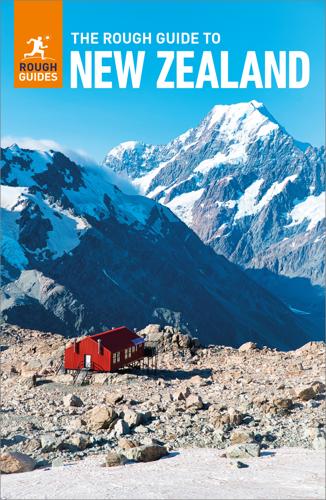
The Rough Guide to New Zealand: Travel Guide eBook
by
Rough Guides
Published 1 Jan 2024
A surging fly-on-the-wall-style comment on the economically challenged Māorisituation in modern south Auckland, bringing to mind the British kitchen-sink dramas of the 1950s and 1960s. More a study of class than a full-blown racial statement, it revels in human weakness and strength of spirit against a background of urban decay. Based on a novel by Alan Duff (see page 556). Operation 8 Errol Wright and Abi King-Jones, 2011. Doco based on the real events of October 2007, when government agencies used the 2002 Terrorism Suppression Act as justification for arresting a number of Māori activists and its repercussions on wider society.
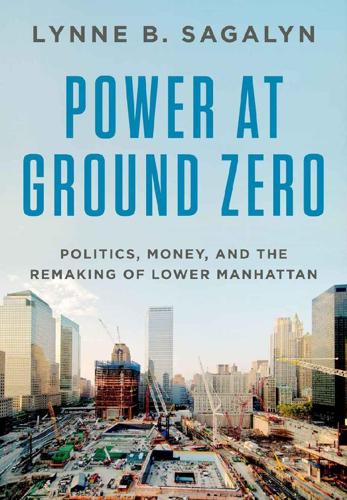
Power at Ground Zero: Politics, Money, and the Remaking of Lower Manhattan
by
Lynne B. Sagalyn
Published 8 Sep 2016
Asserting Resilience New Yorkers with clear memories of the past did not have to dig deep to remember how the city struggled to emerge from the murky miasma of the difficult 1960s and the scary brush with municipal bankruptcy in the 1970s. New York and its serial crises made the covers of national magazines and journals; it was the poster child for urban decay, the apotheosis of the demise of city life, Exhibit A of the big bad city. These dark and gloomy decades loomed as an ever-threatening reminder of what would be if the city did not recover—in strength—from the devastating terrorist attack. Successfully rebuilding the Trade Center site—cost not a consideration—was a civic imperative.
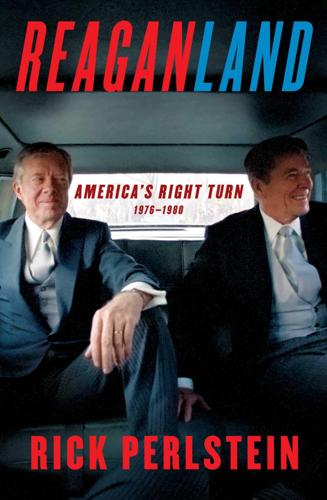
Reaganland: America's Right Turn 1976-1980
by
Rick Perlstein
Published 17 Aug 2020
He promised “ ‘town hall’ meetings across the nation, where you can criticize, make suggestions, and ask questions,” and radio call-in sessions “during which I can accept your phone calls and answer the questions that are on your mind.” And he ran through a laundry list of policy goals: laws to prevent strip mining and oil tanker spills; measures to fight inflation, unemployment, urban decay, and welfare fraud. He promised to start his plan to reorganize a “confused and wasteful” government “at the top—in the White House,” with a one-third reduction in staff. He announced “a ceiling on the number of people employed by federal government agencies.” This was Carter the engineer. Then came the Baptist minister, preaching from the Book of Caddell.
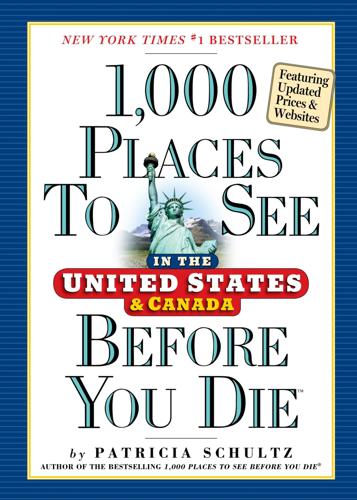
1,000 Places to See in the United States and Canada Before You Die, Updated Ed.
by
Patricia Schultz
Published 13 May 2007
DuBois, Zora Neale Hurston, Langston Hughes, and Duke Ellington, who forged what became known as the Harlem Renaissance, the first great flowering of black arts and letters in the U.S. But by the late 1970s, overcrowding, neglect, poverty, drugs, and violence had degraded the neighborhood into a symbol of urban decay. But in the late 1990s, Harlem again turned a corner, with an explosion of new businesses and block after block of historic homes slowly restored to their earlier glory. At the southern end is 125th Street, a vibrant retail corridor with national chains standing side by side with locally owned shops, restaurants, and offices—including those of former president Bill Clinton.